High priest of plaster, Michael Allen, is a self described dualist. A reformed collector of collections, Michael is a designer and craftsperson who is equally drawn to country and city, organization and chaos, and both minimalism and maximalism.
With what he calls the strict practicality of his Appalachian upbringing, Michael specializes in plaster finishes without definition, his work being more like a three-dimensional painting made with super thick paint. When you consider that most of today’s interiors are sealed with a kind of plastic, that often include latex paints, Michael’s wall treatments of pigment and plaster stand apart. Plaster surfaces evoke the hand made, the cave wall, and the radiance of frescoes. He works with plaster not only for its ability to portray color — one of his passionate interests — but also for its ability to render texture that adds an additional depth to an interior.
Hailing from America’s South, Michael has worked and resided in an East Williamsburg Brooklyn former factory for almost 14 years. He shares this warmly organized space with an assortment of finicky blooming plants, pipe organ parts, his art collection and dusts both old and new. During this time, Michael has grown greedy about natural light and escaping into nature. When he gets a chance, he enjoys making the trip to his getaway home in Greene County at the top of the Catskills Mountains.
This portrait is part of our ongoing collaboration with ZEIT Online who present a special curation of our pictures on their site.
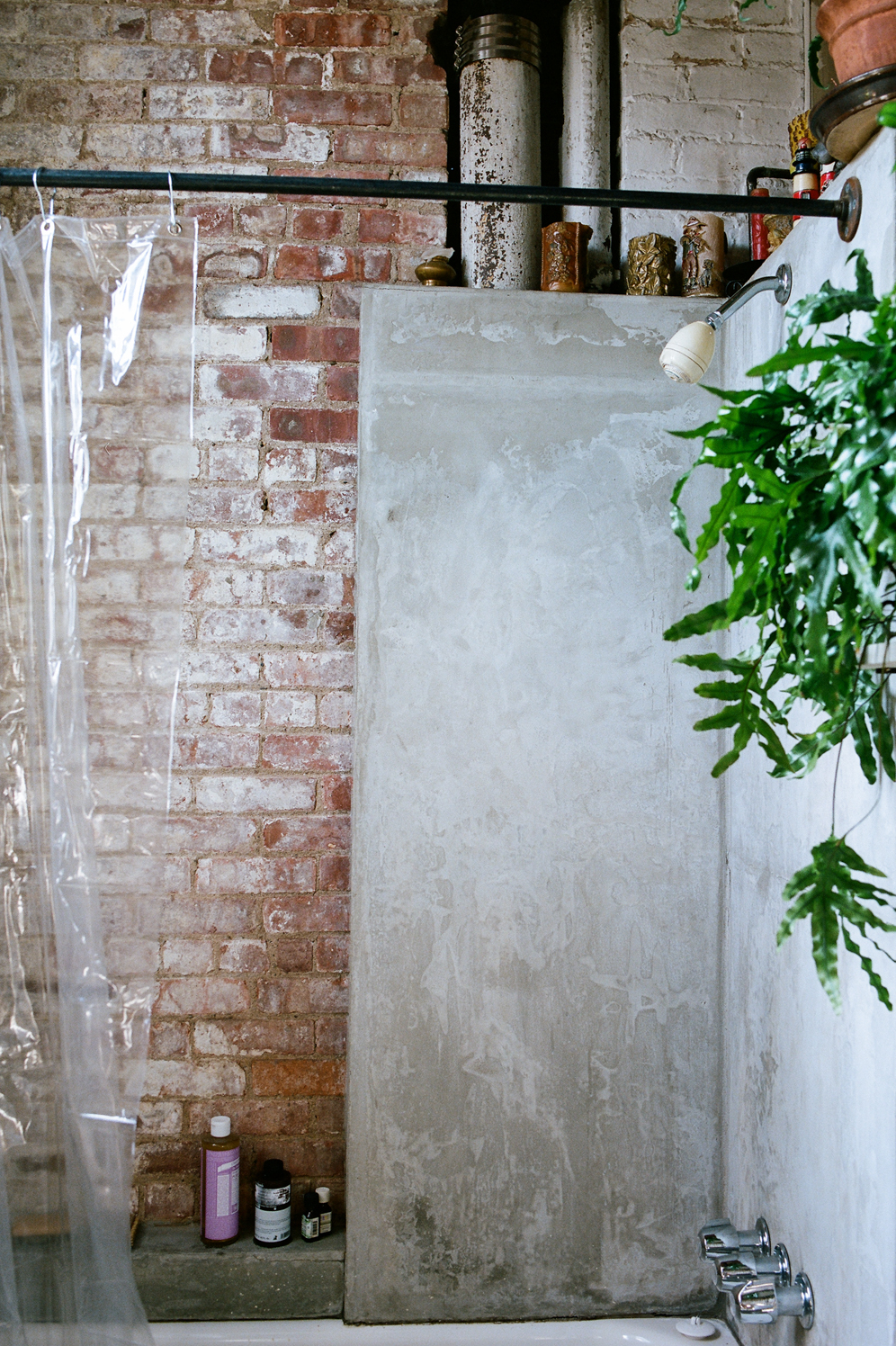
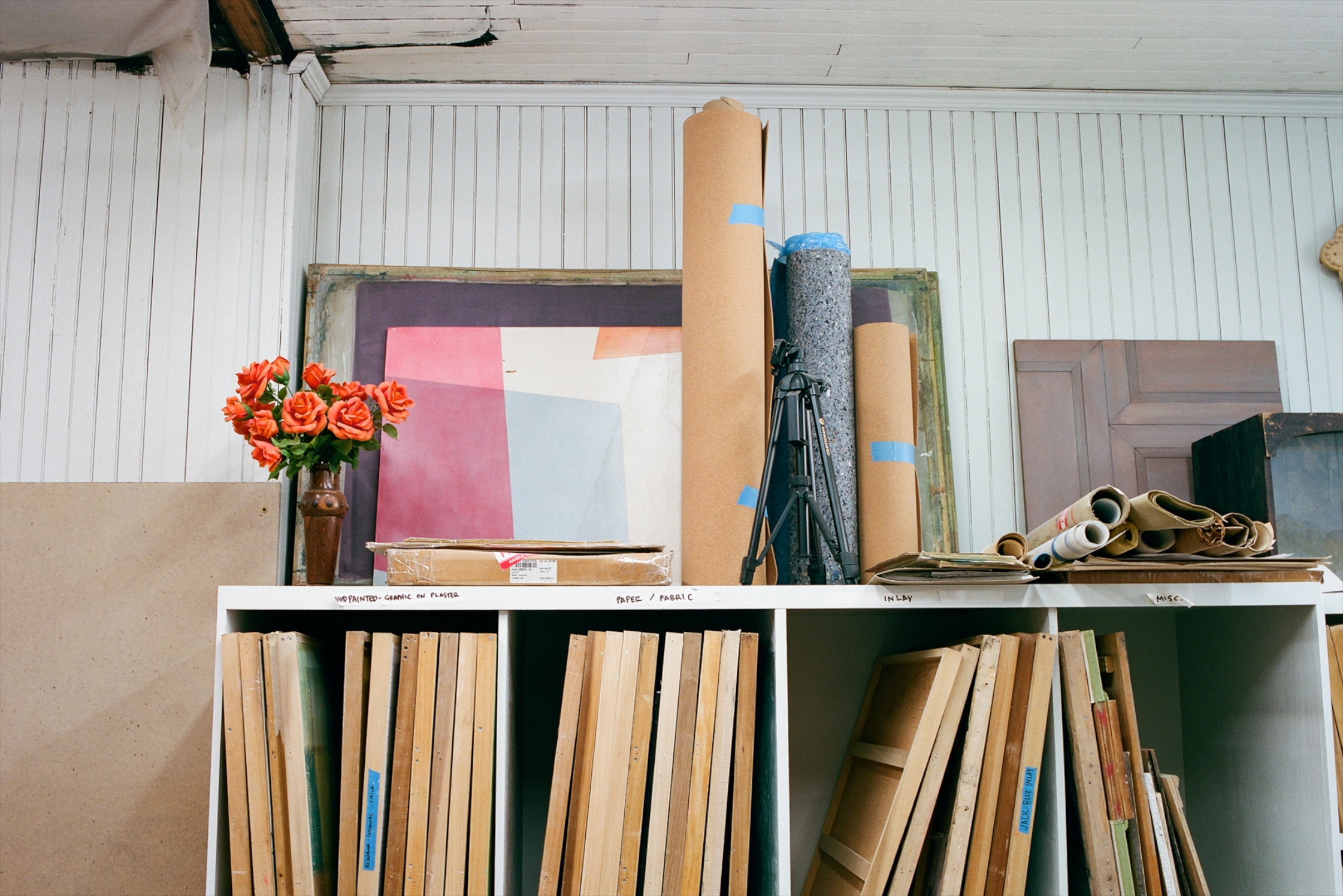
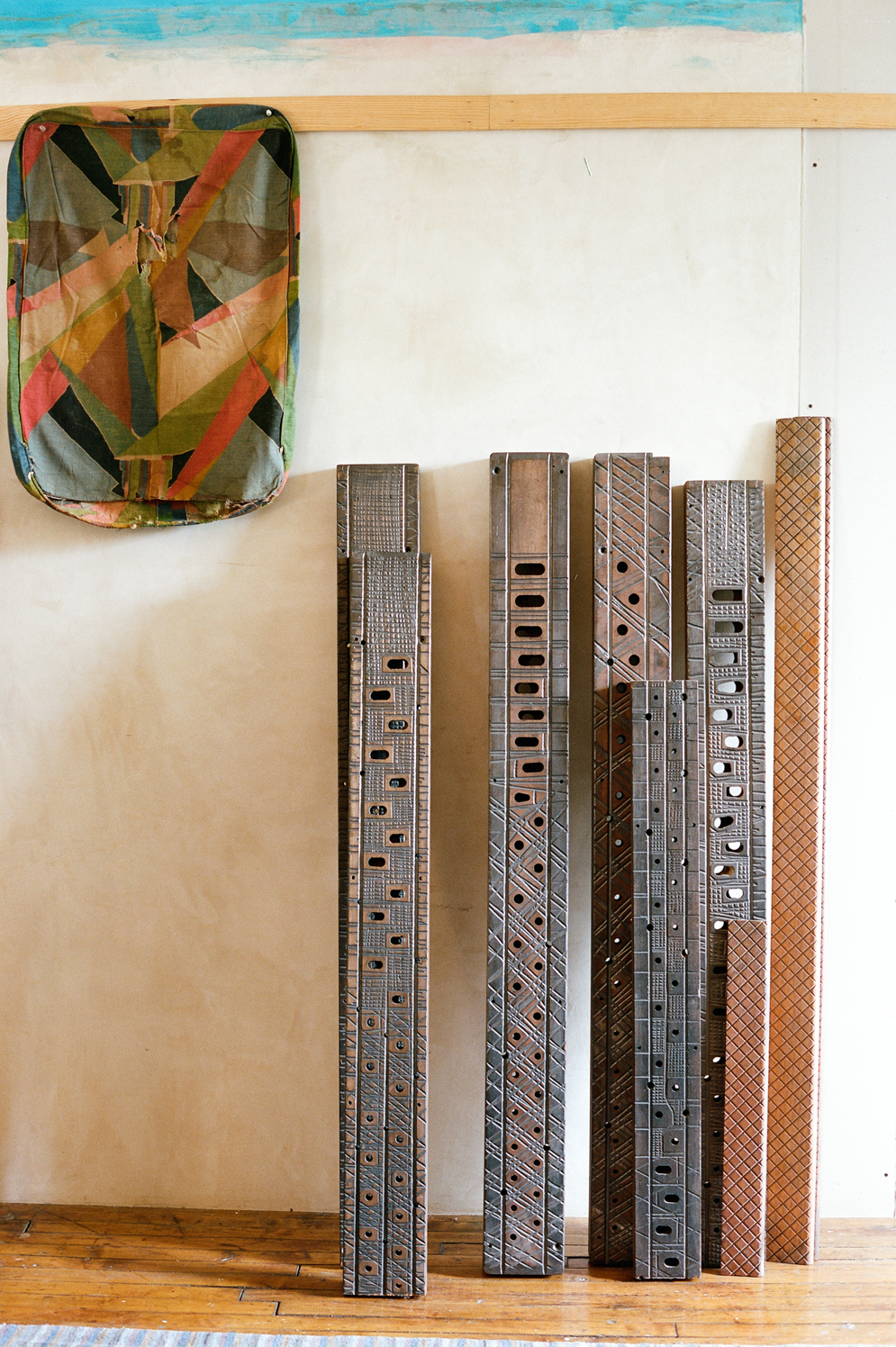
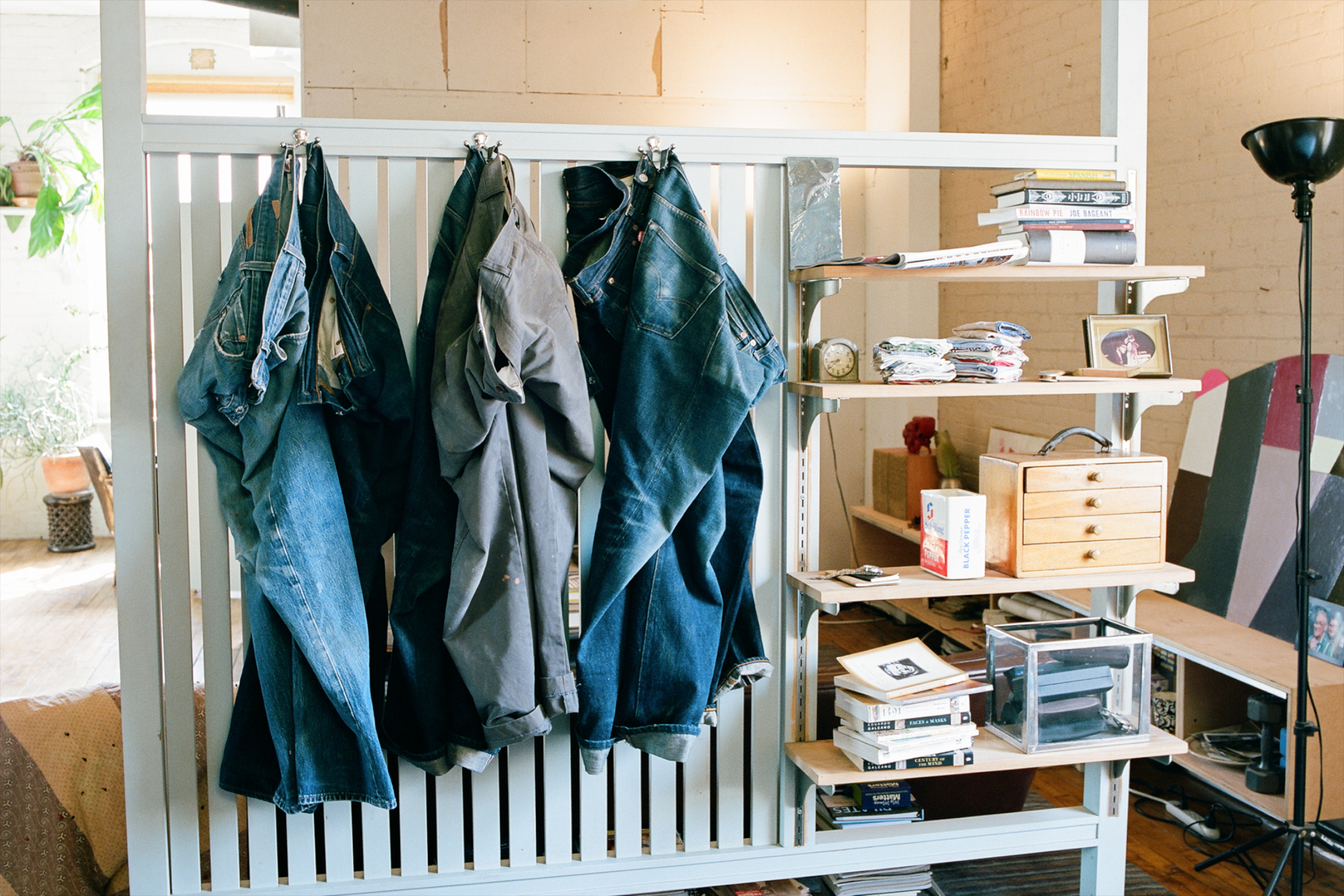
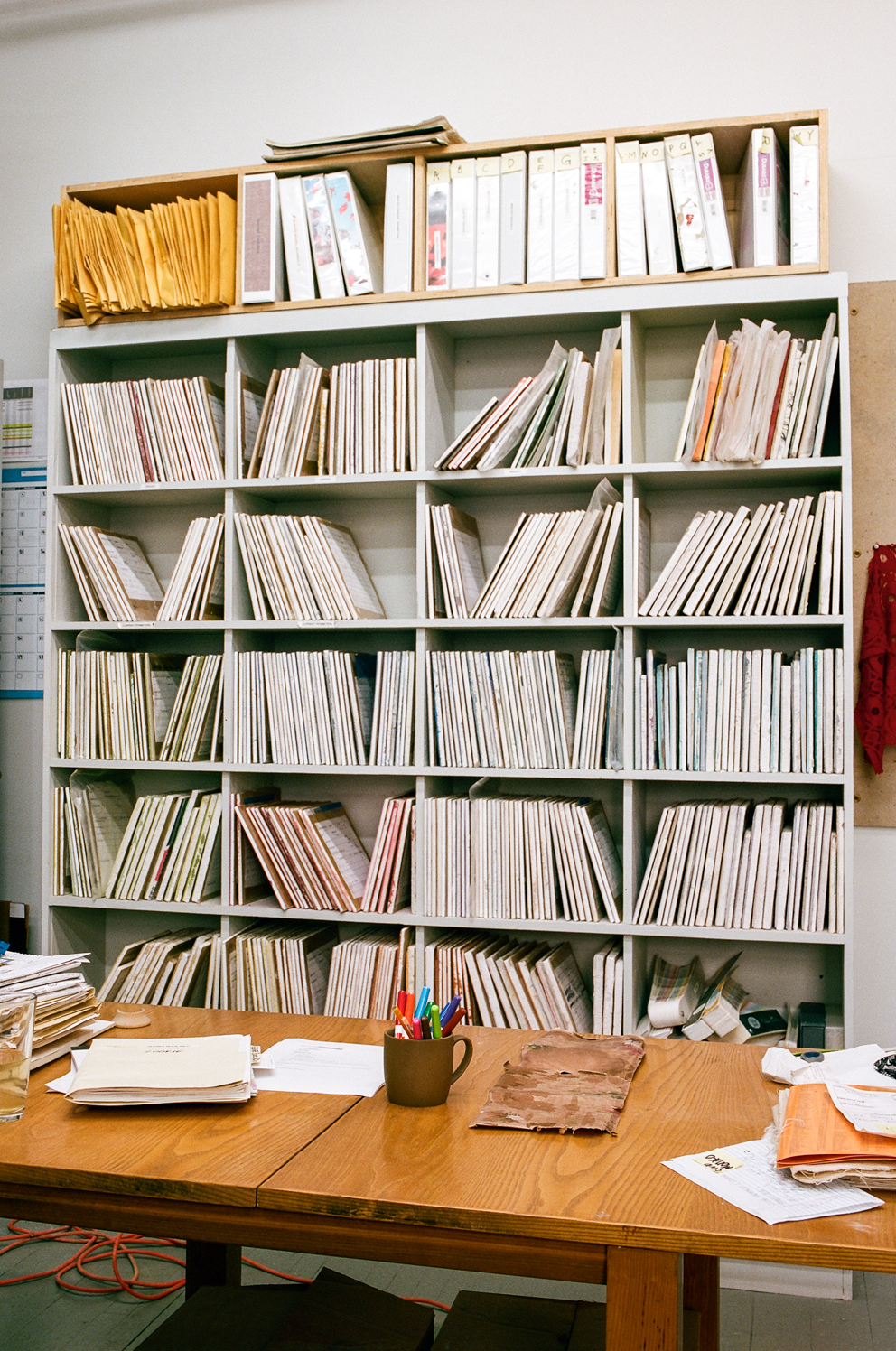
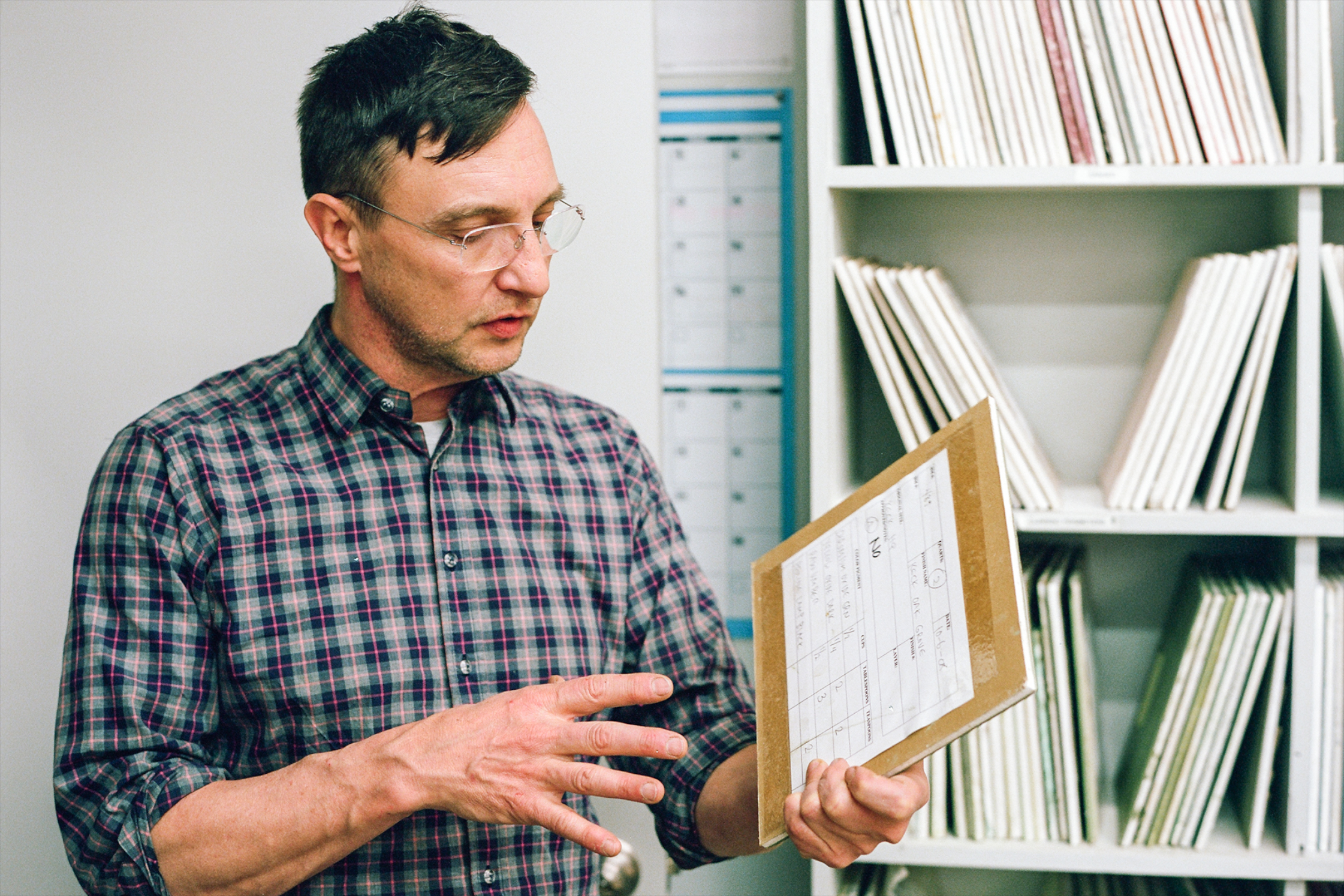
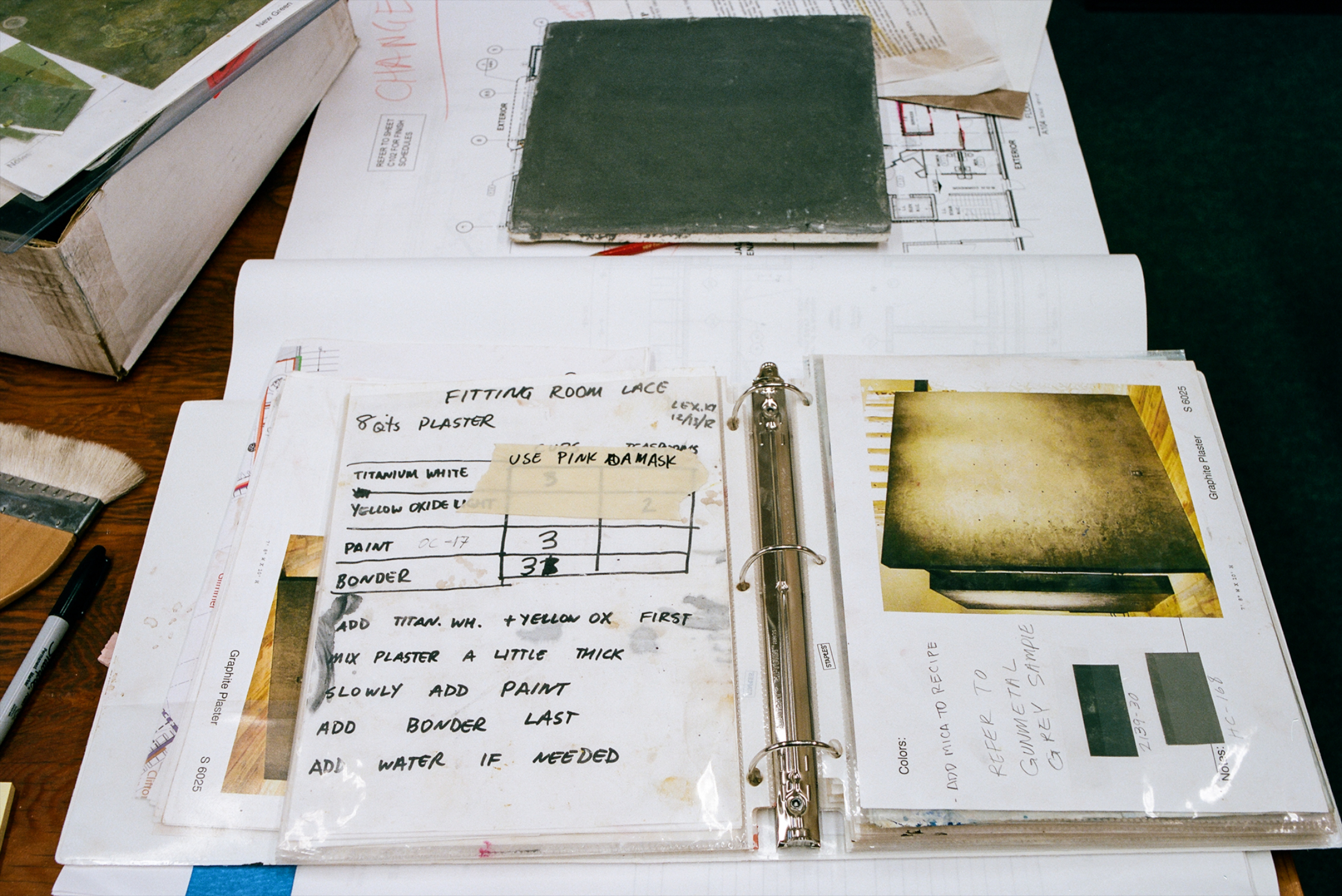
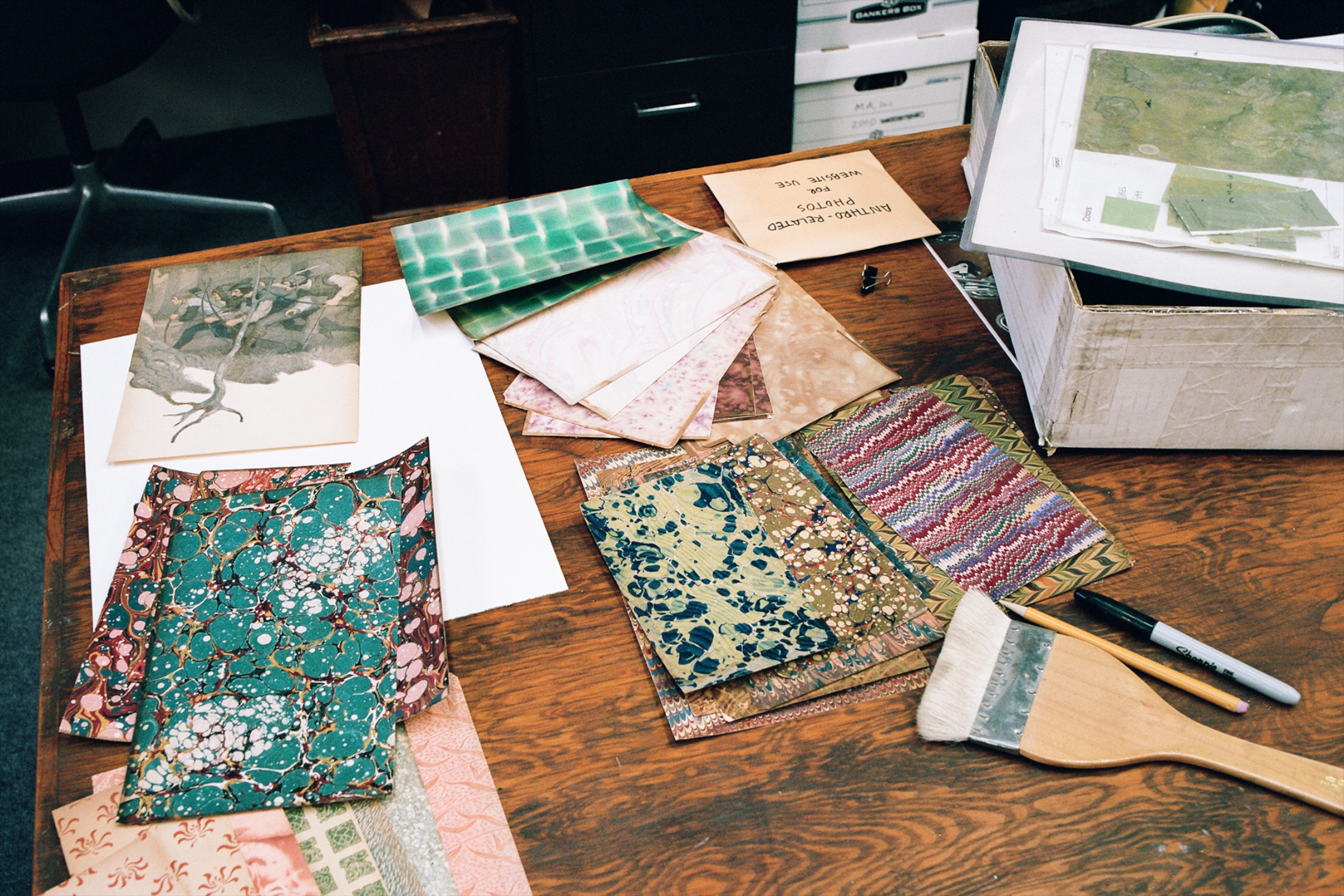
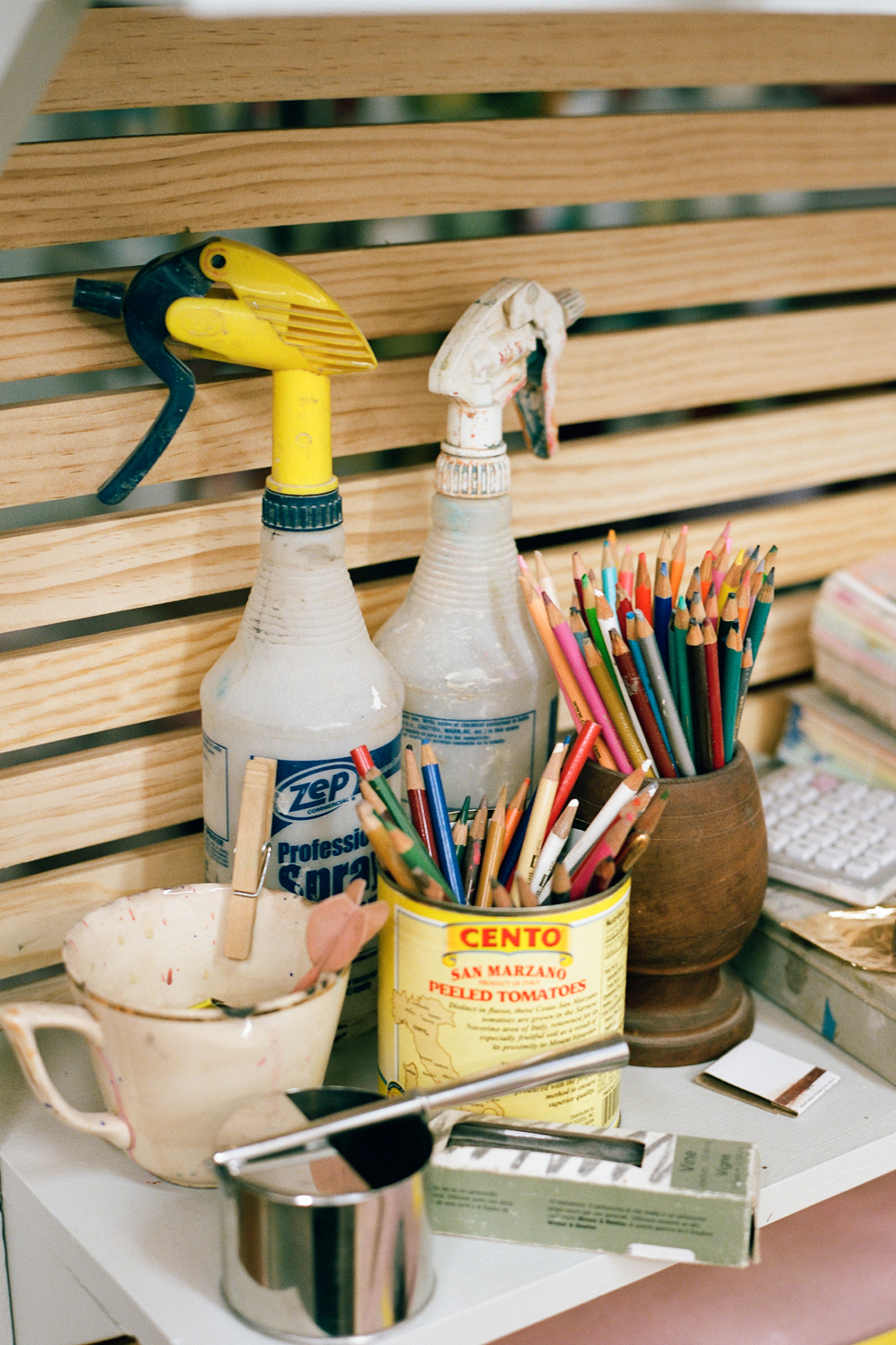
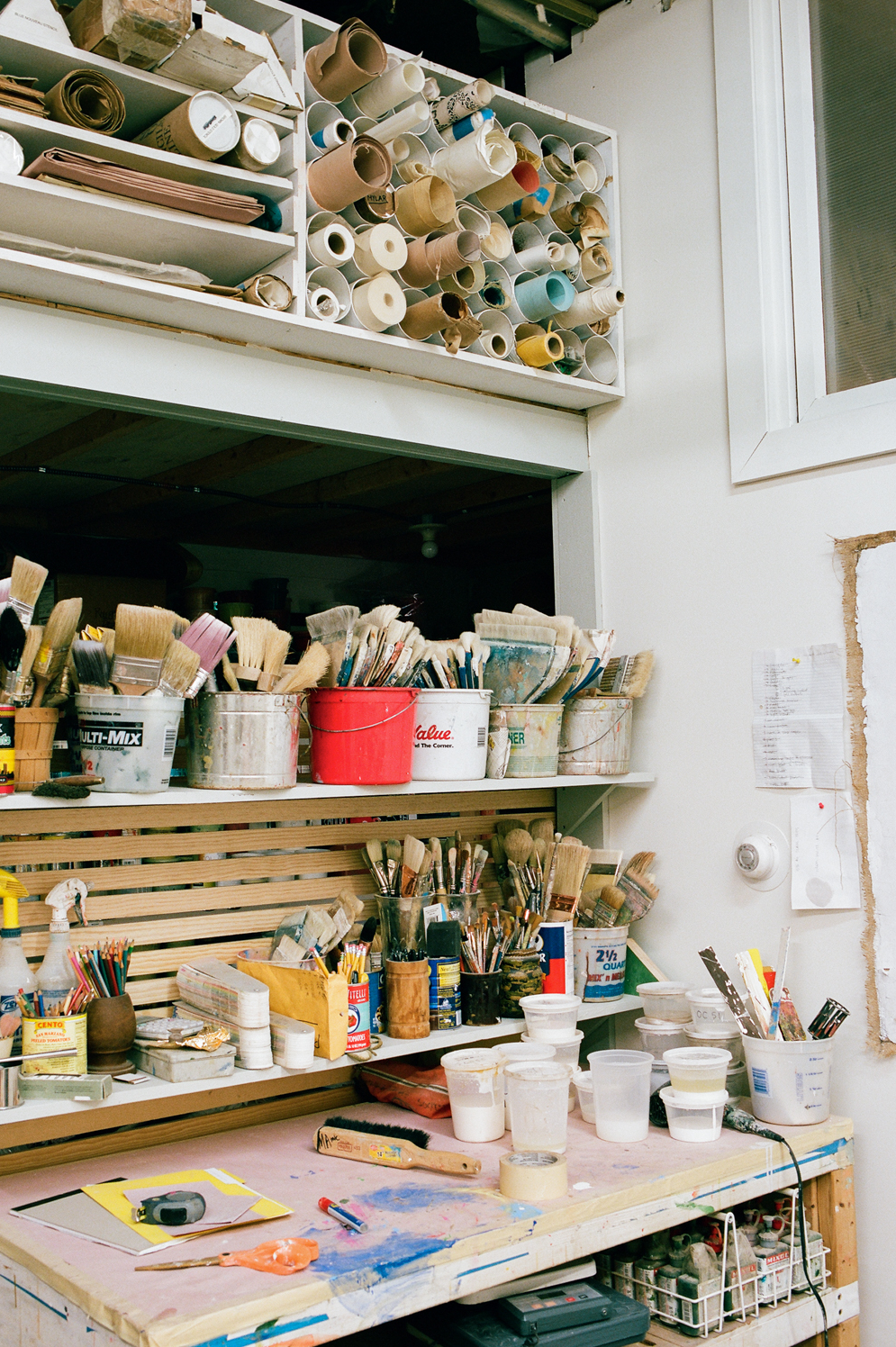
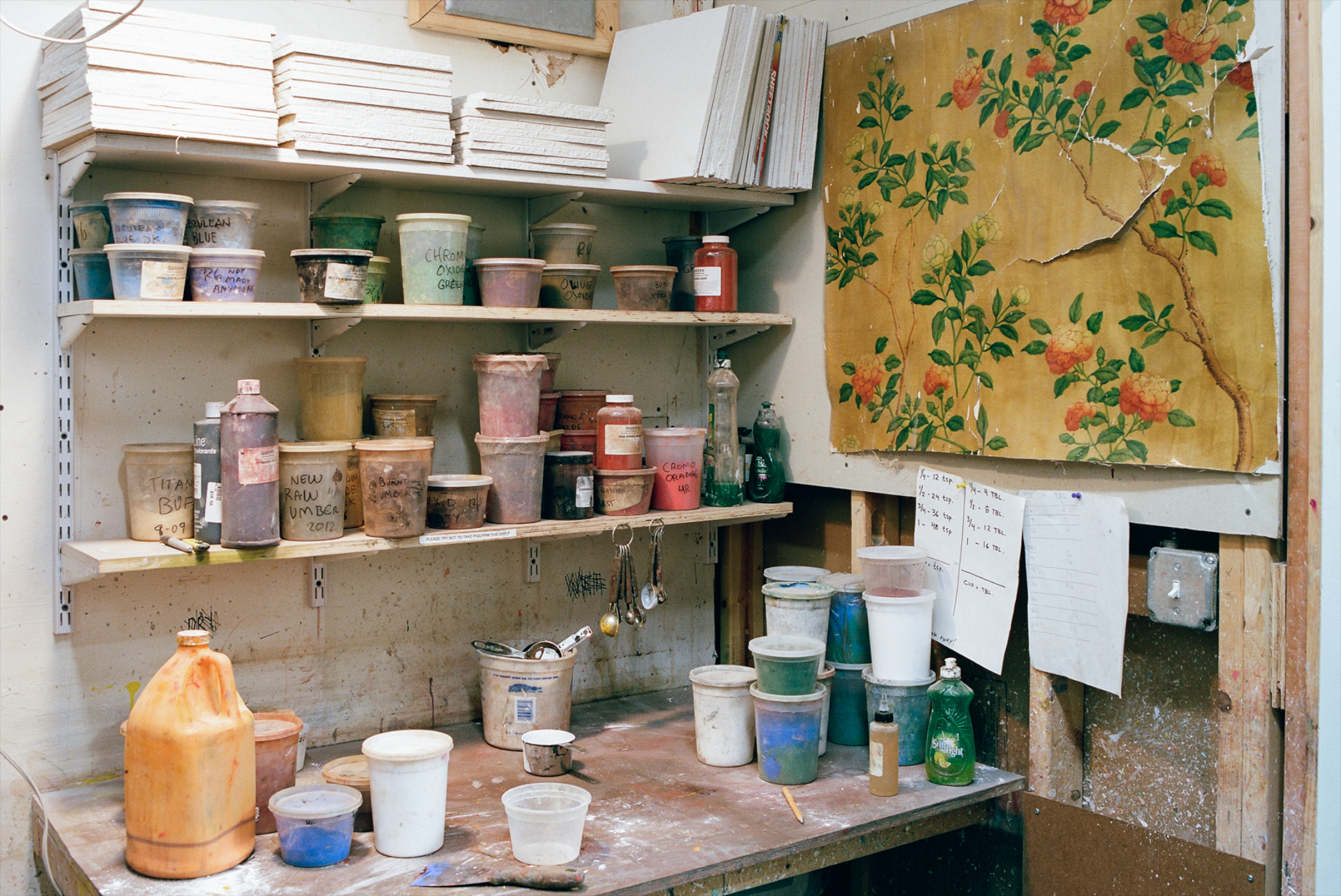
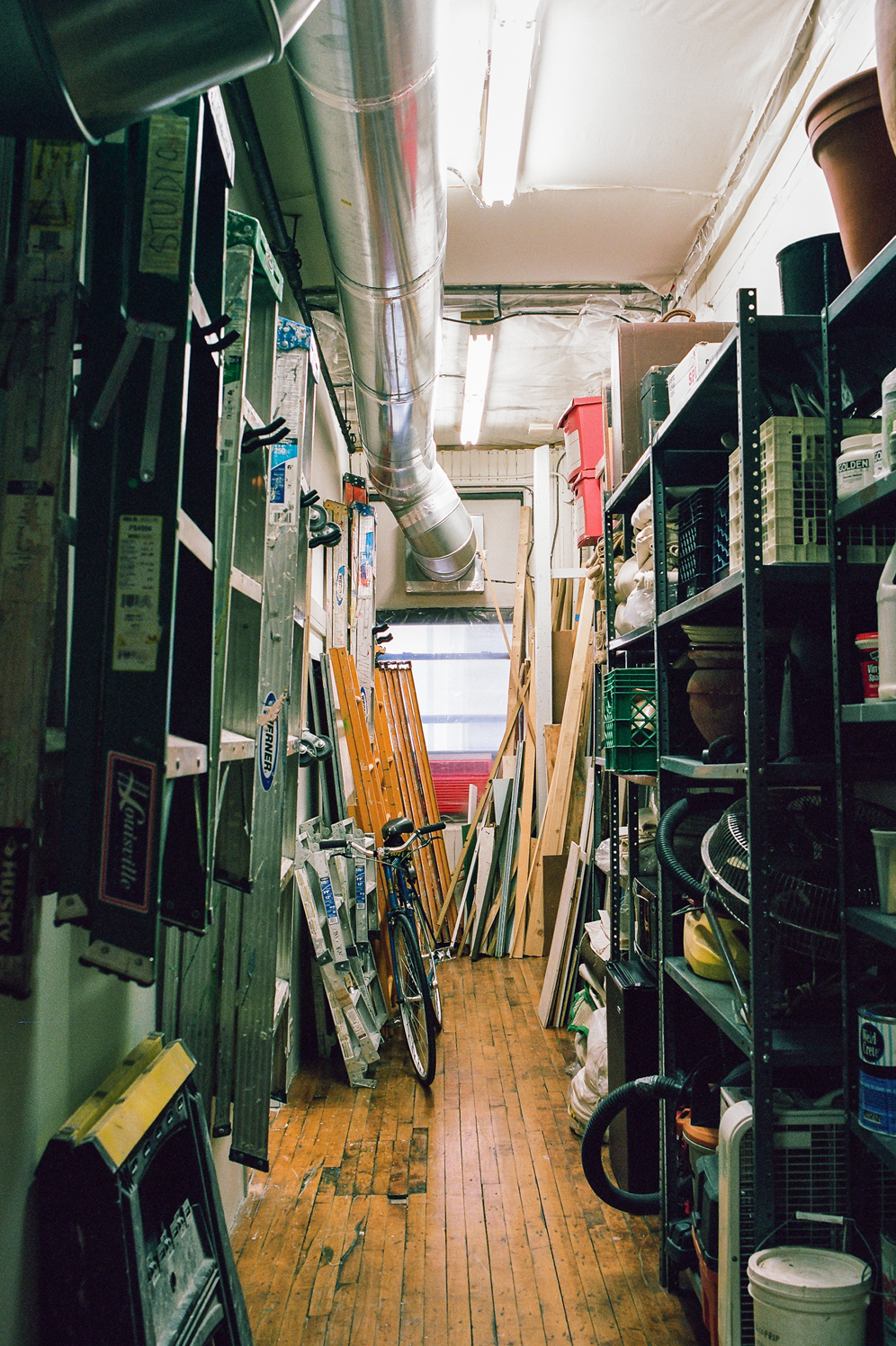
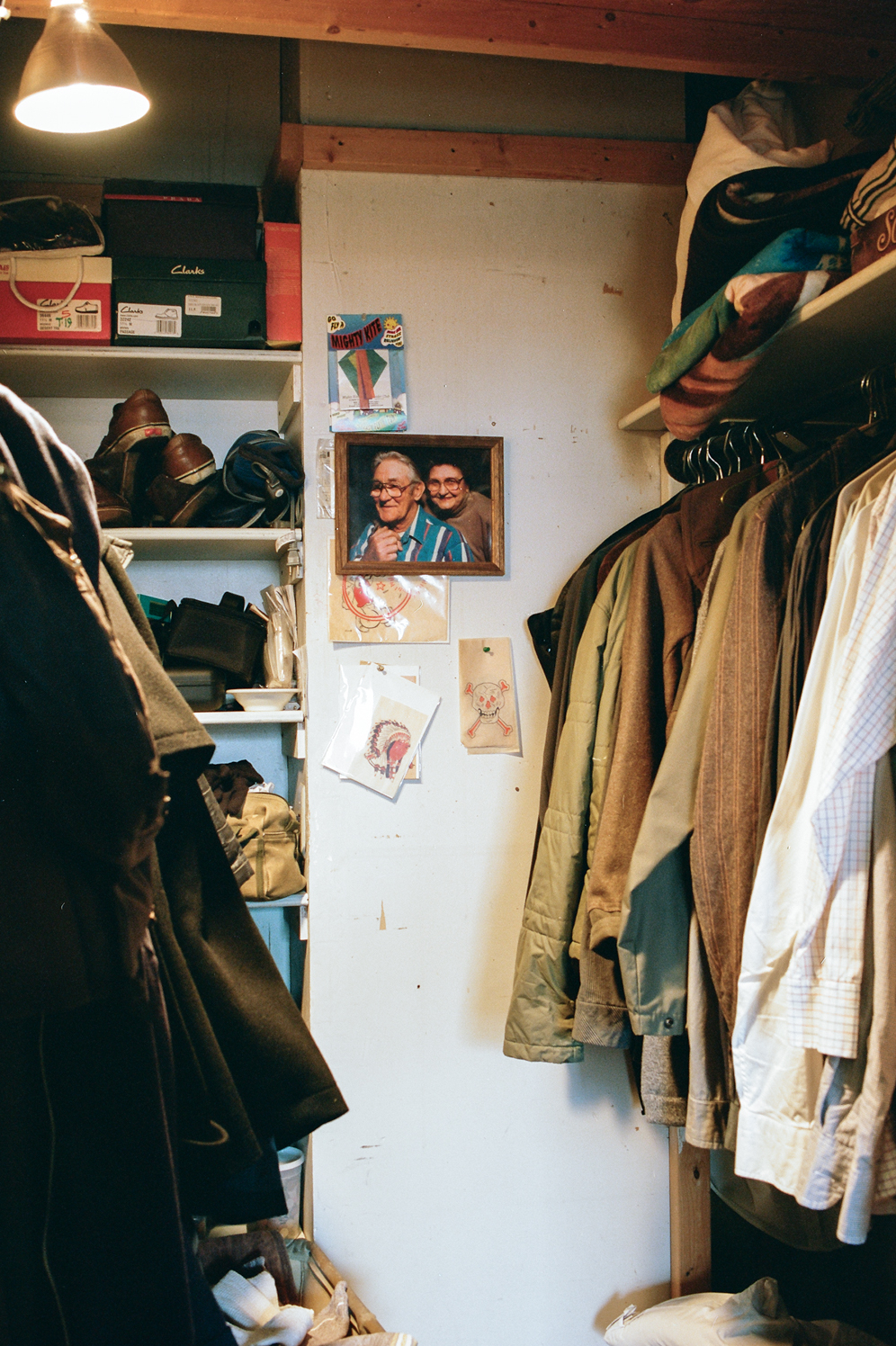
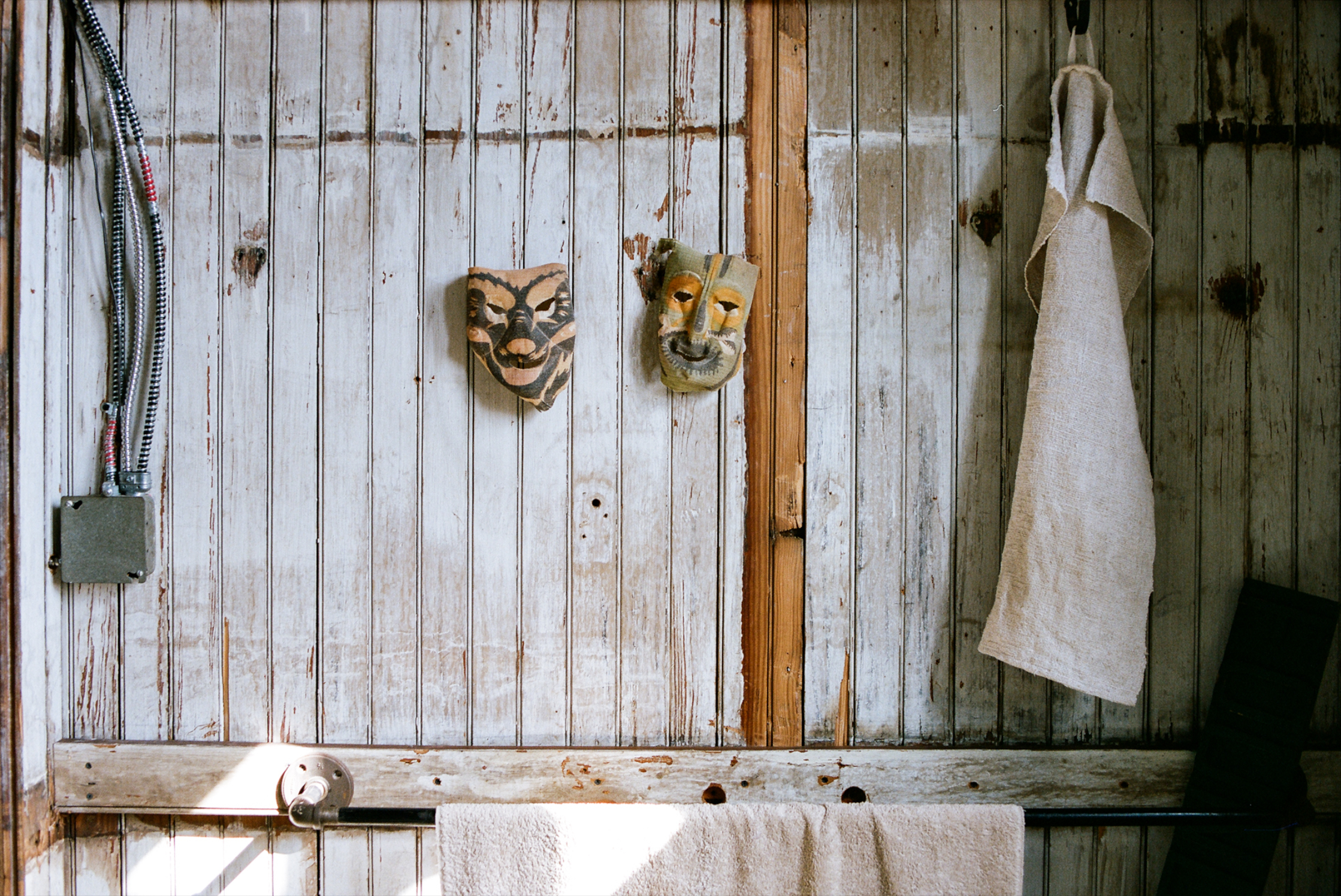
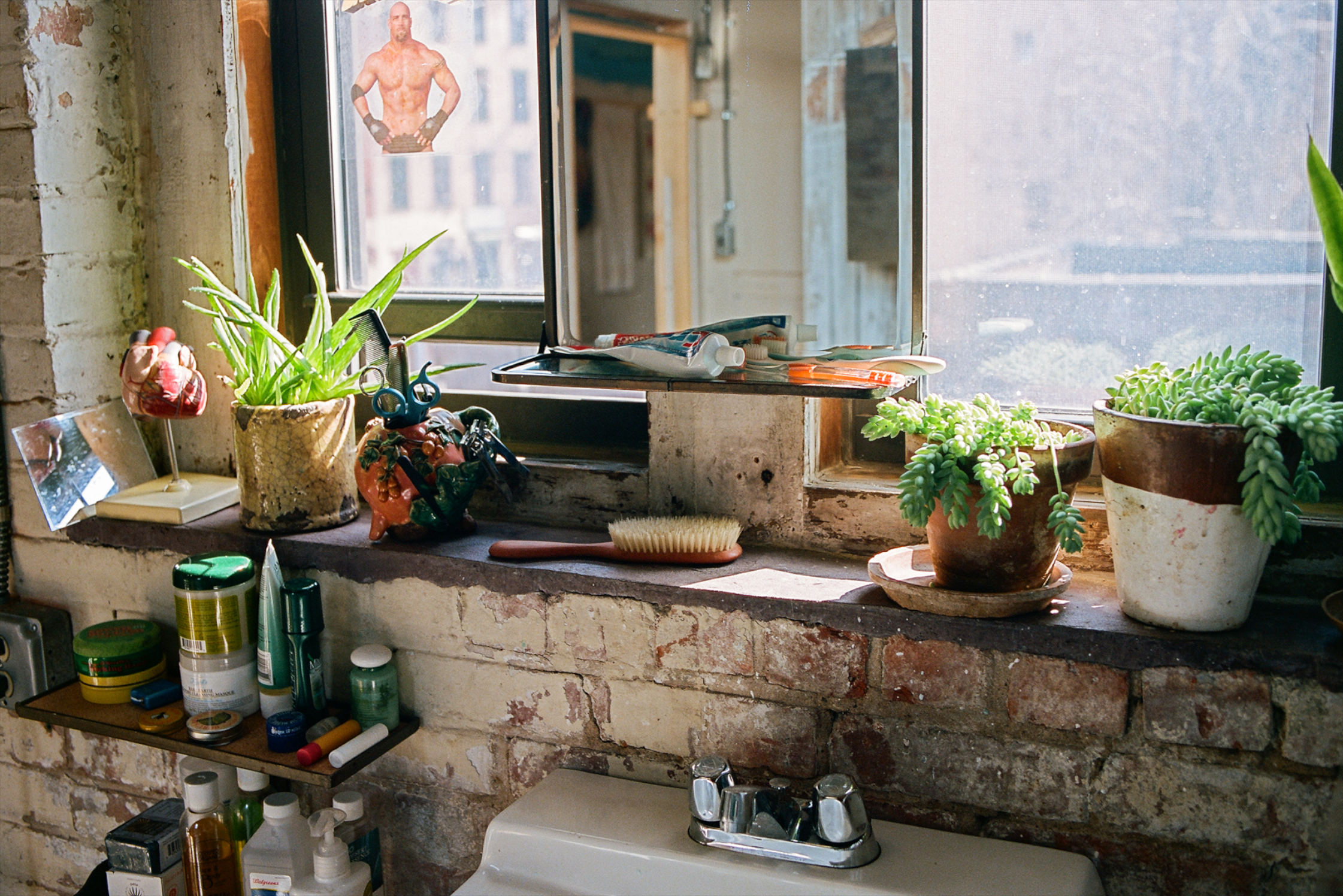
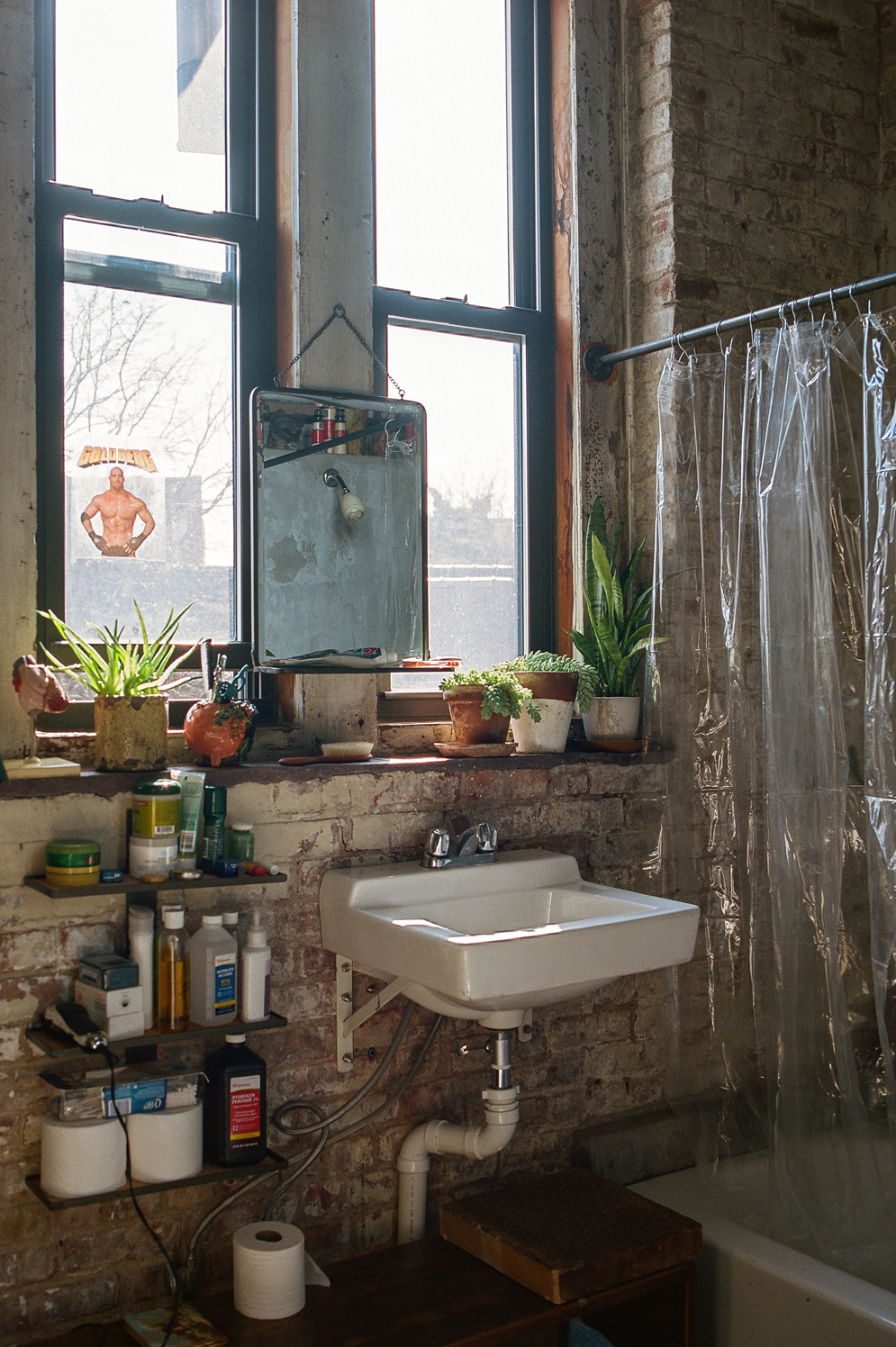
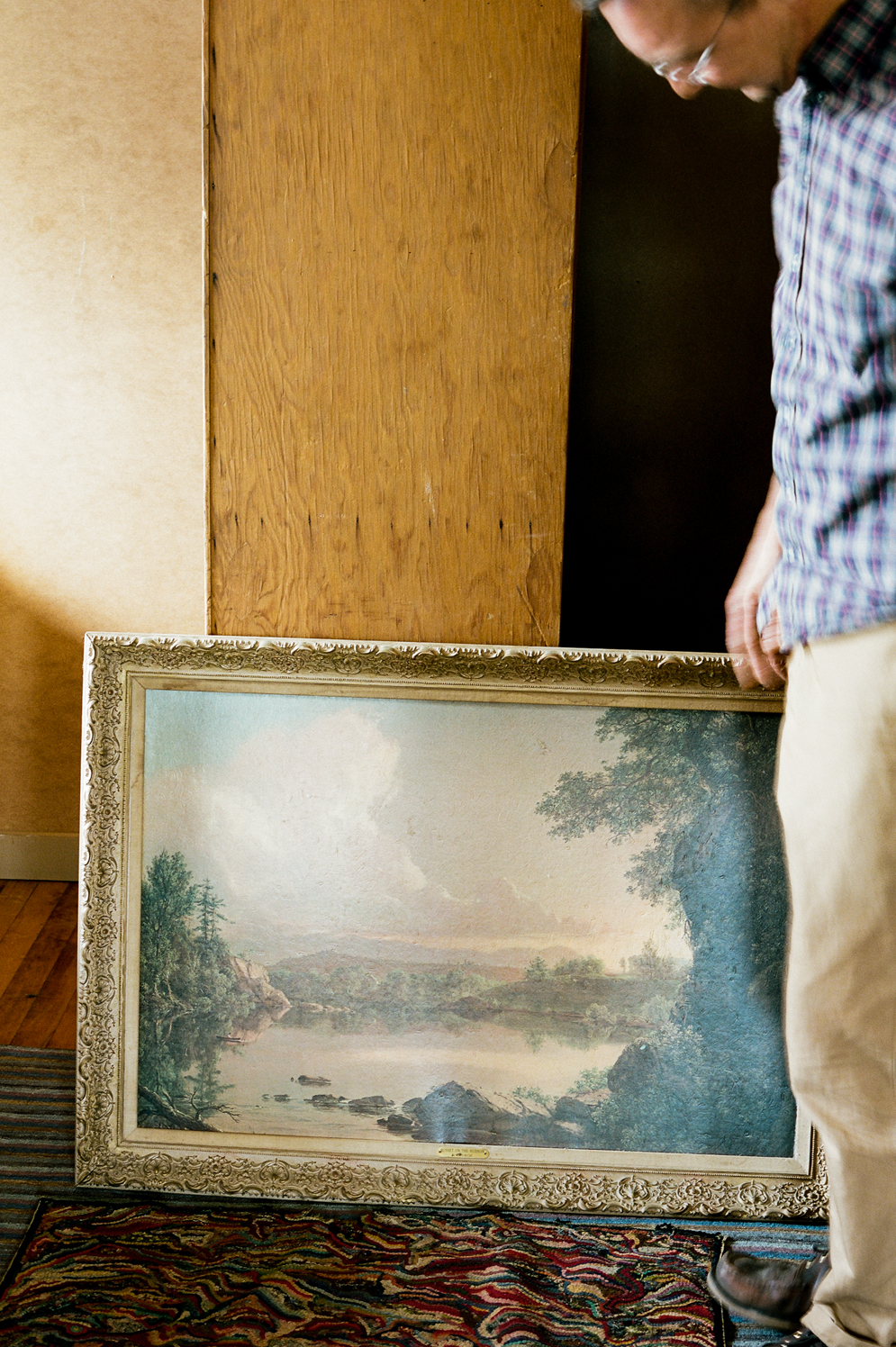
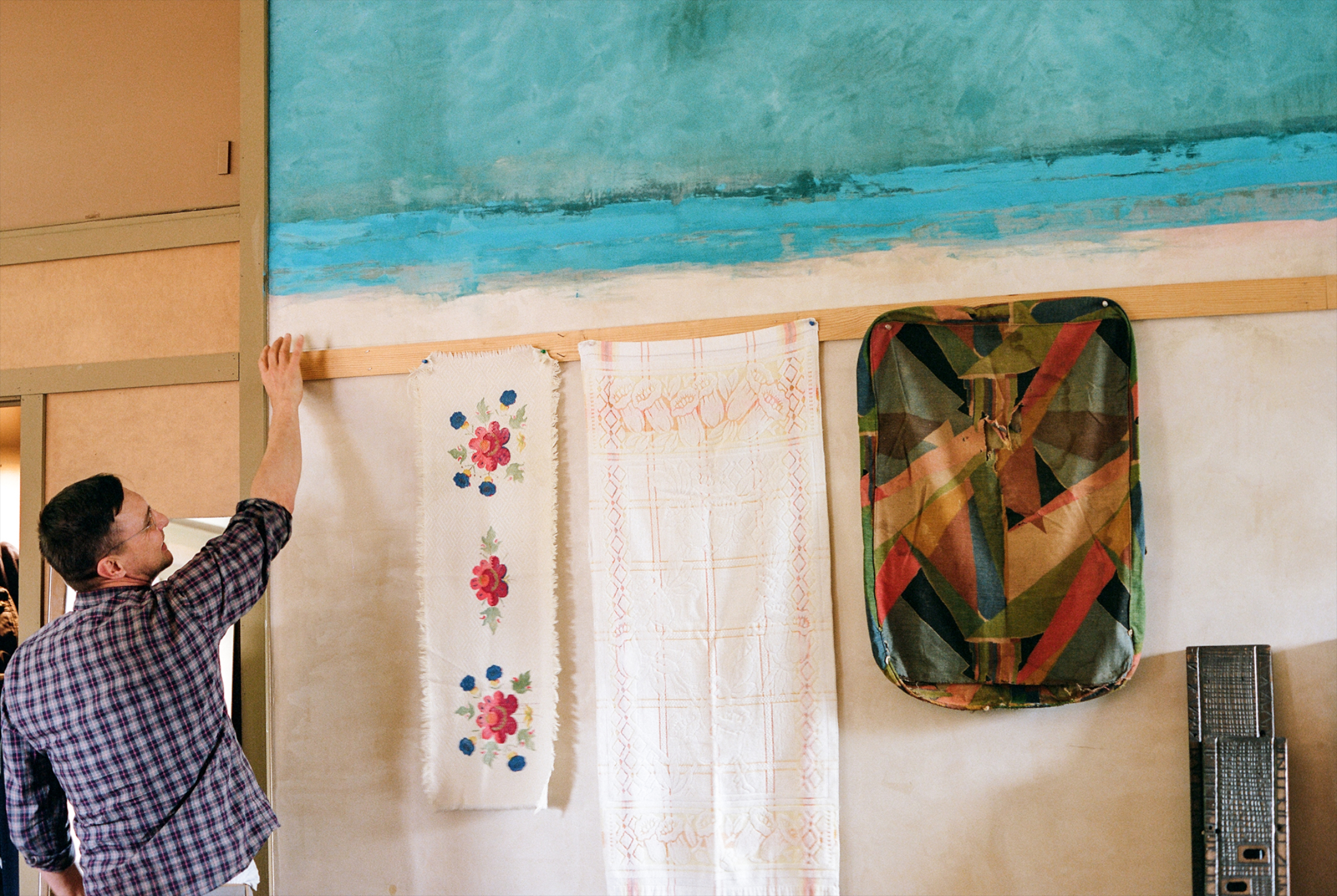
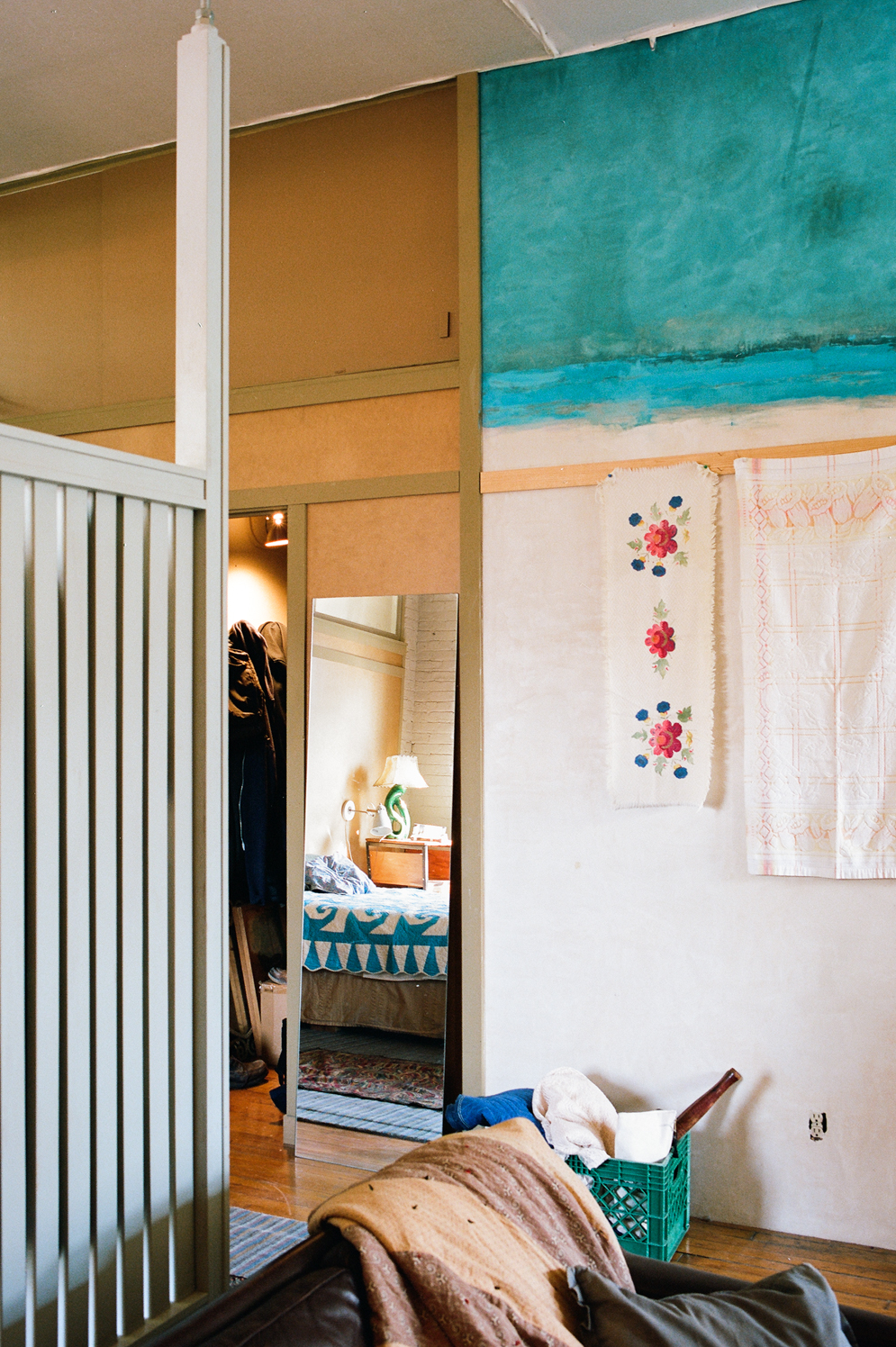
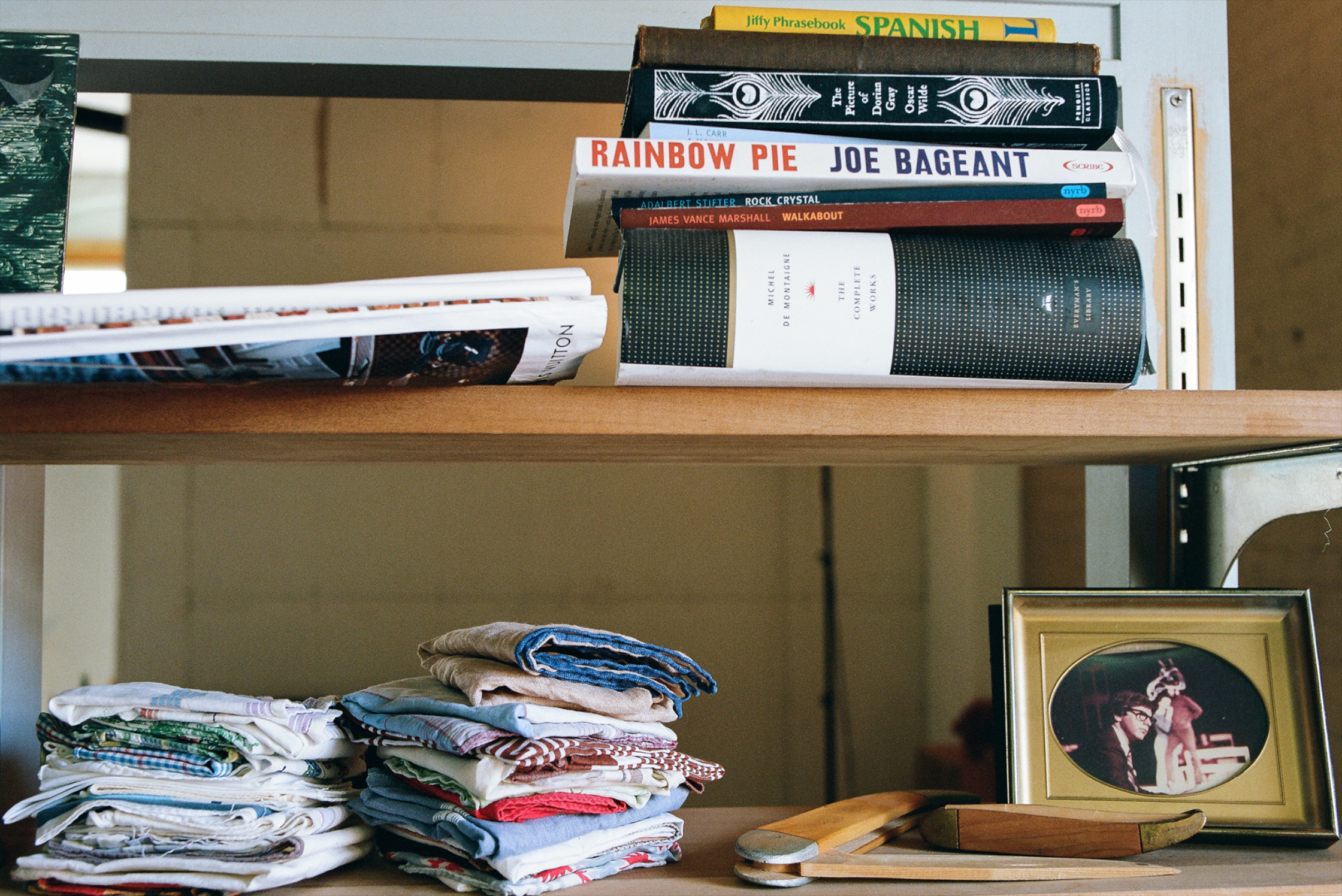
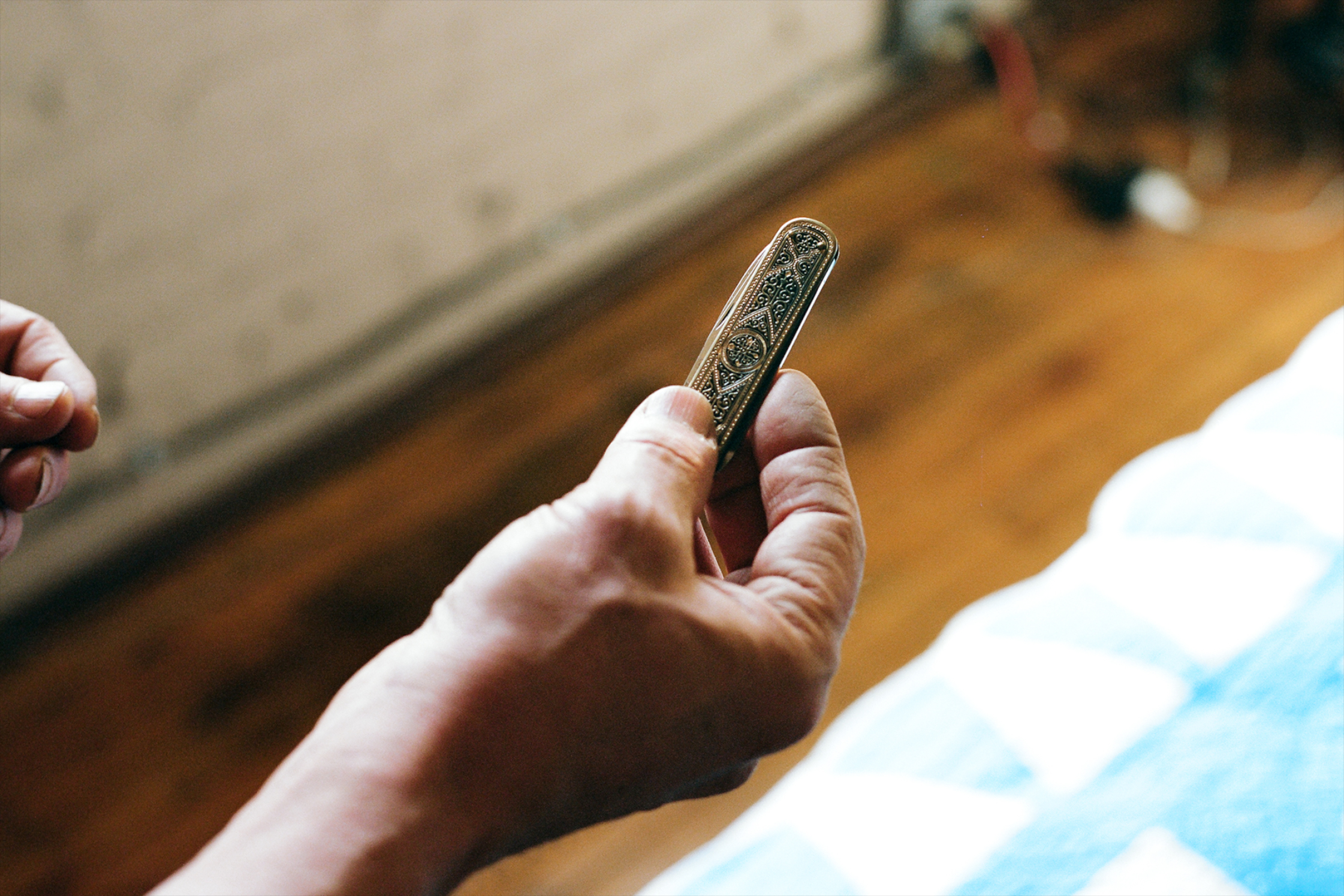
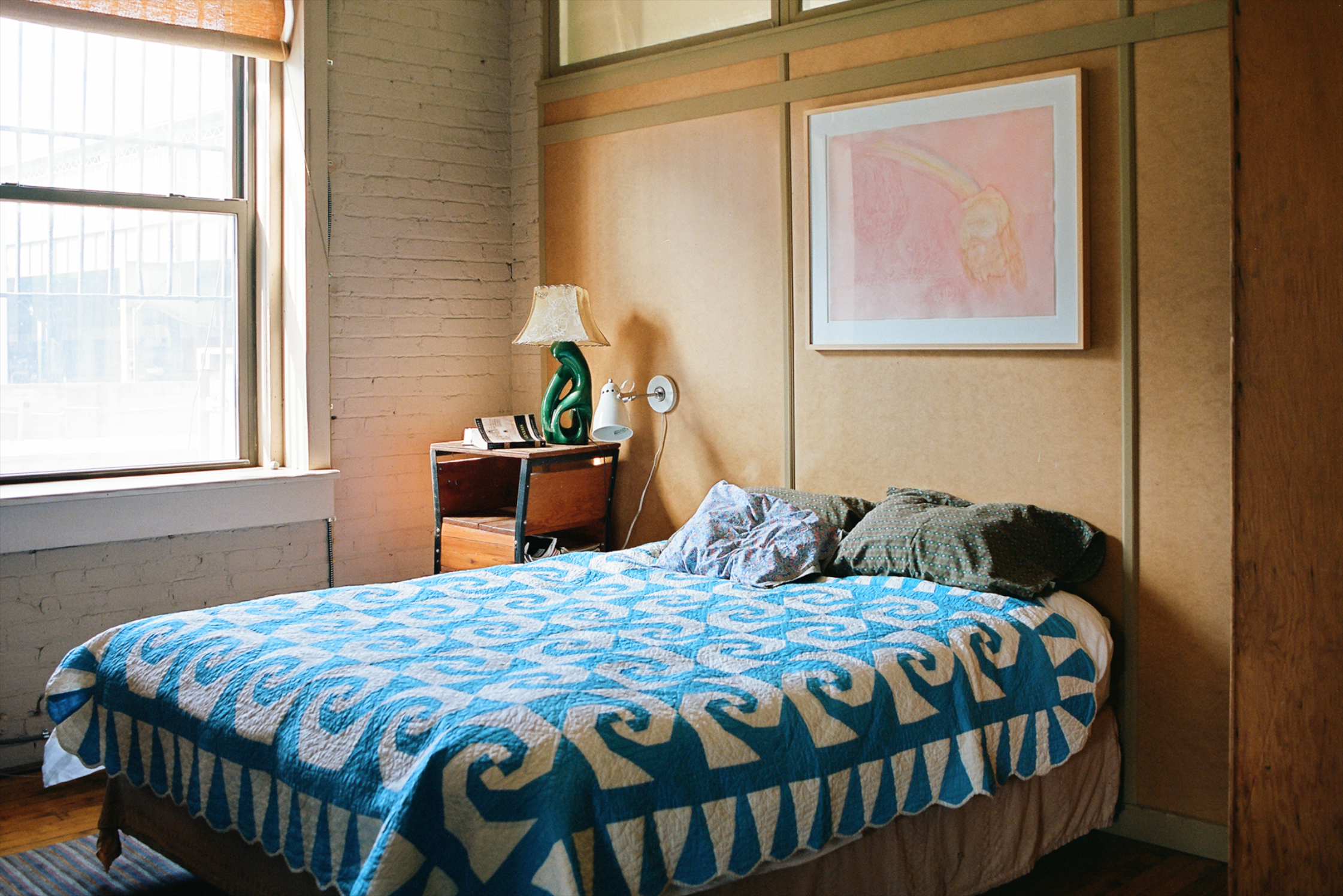
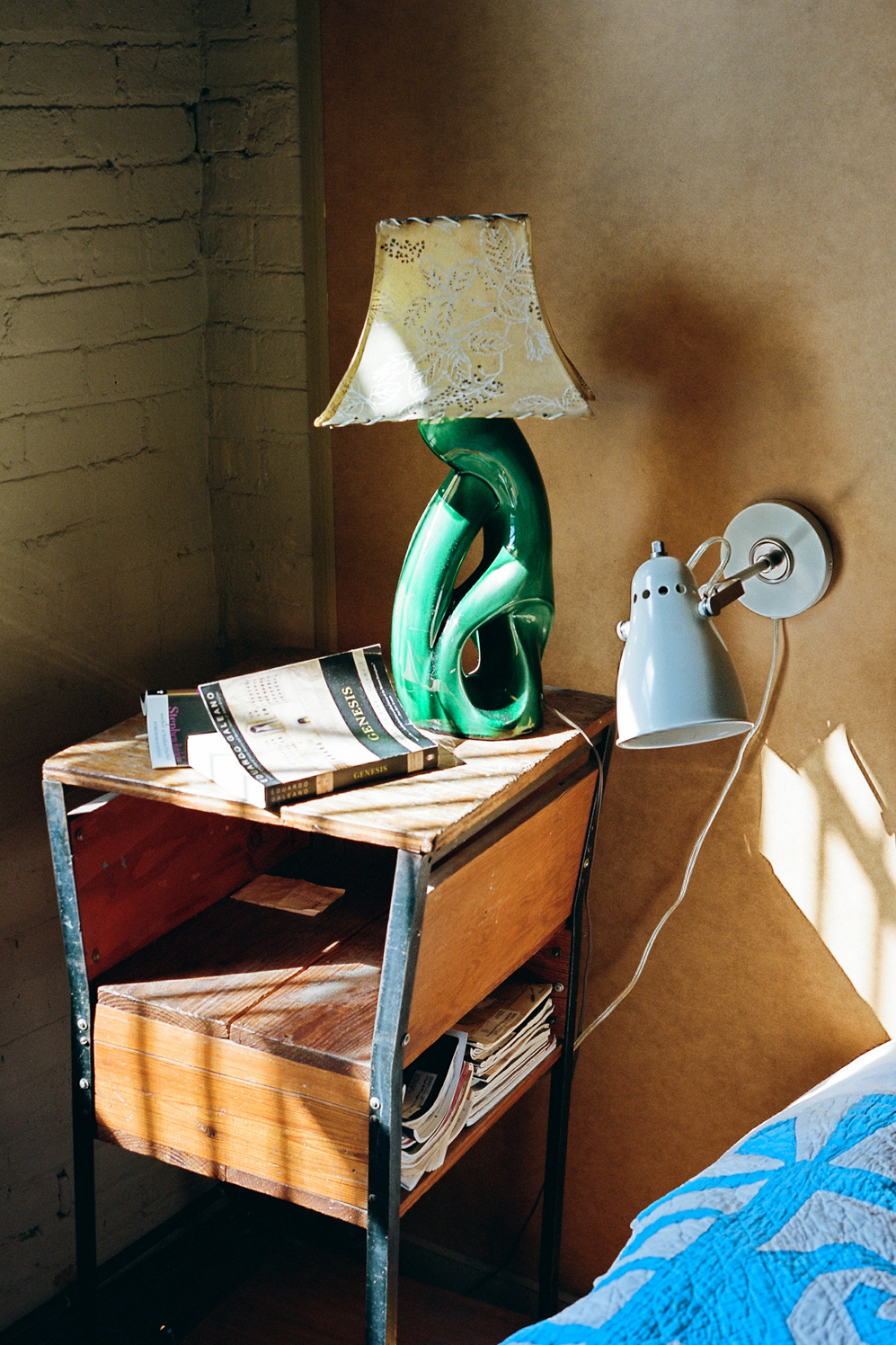
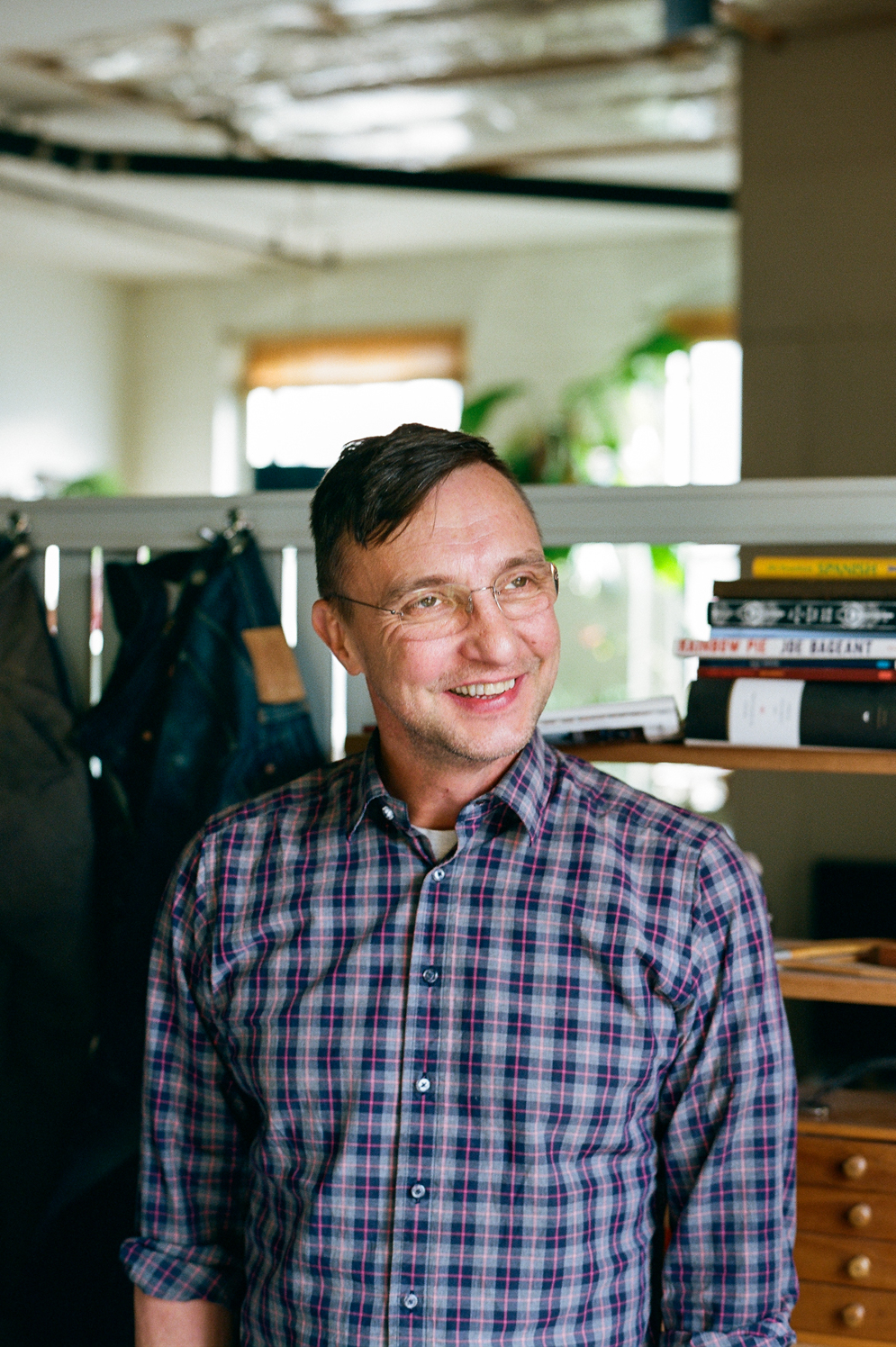
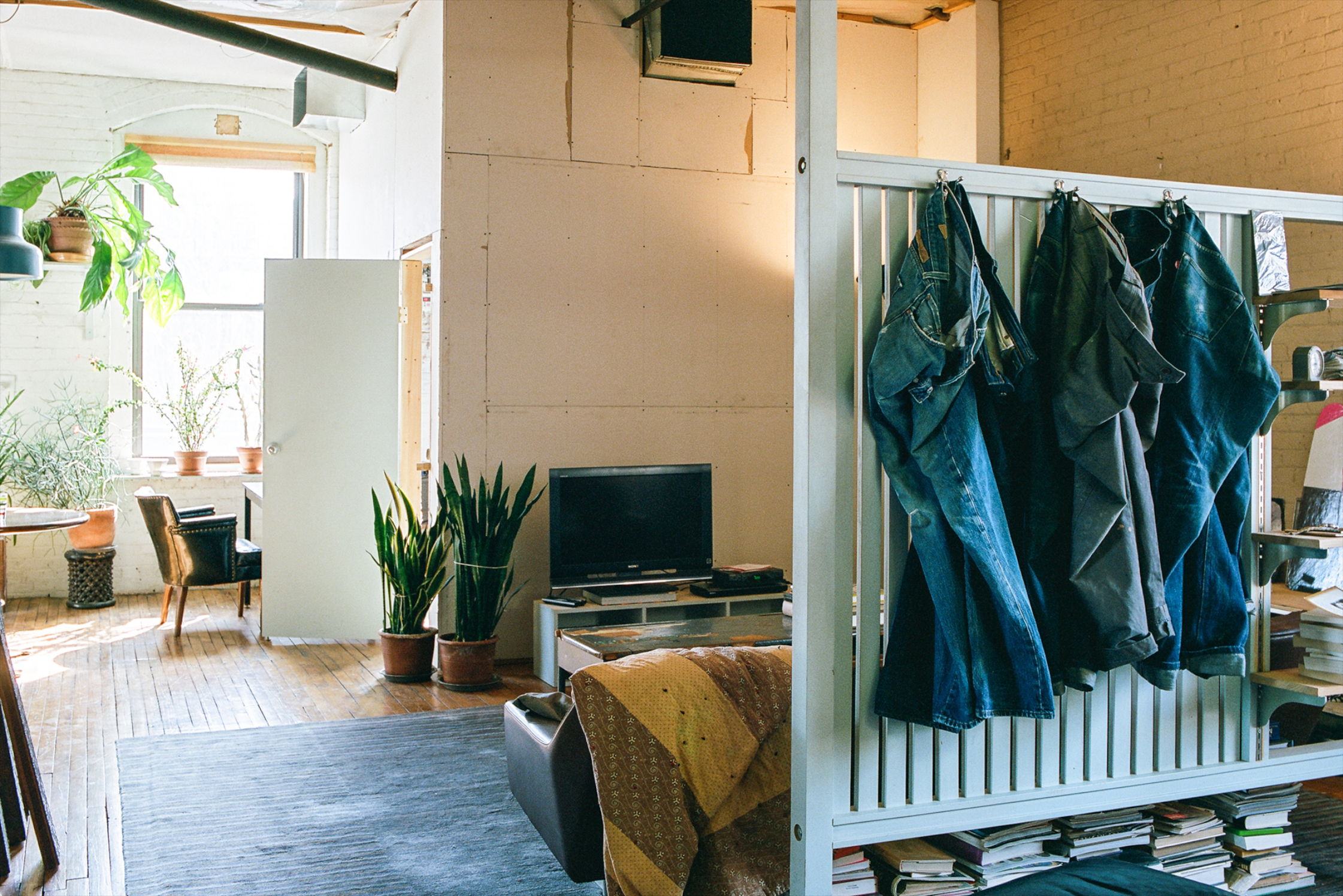
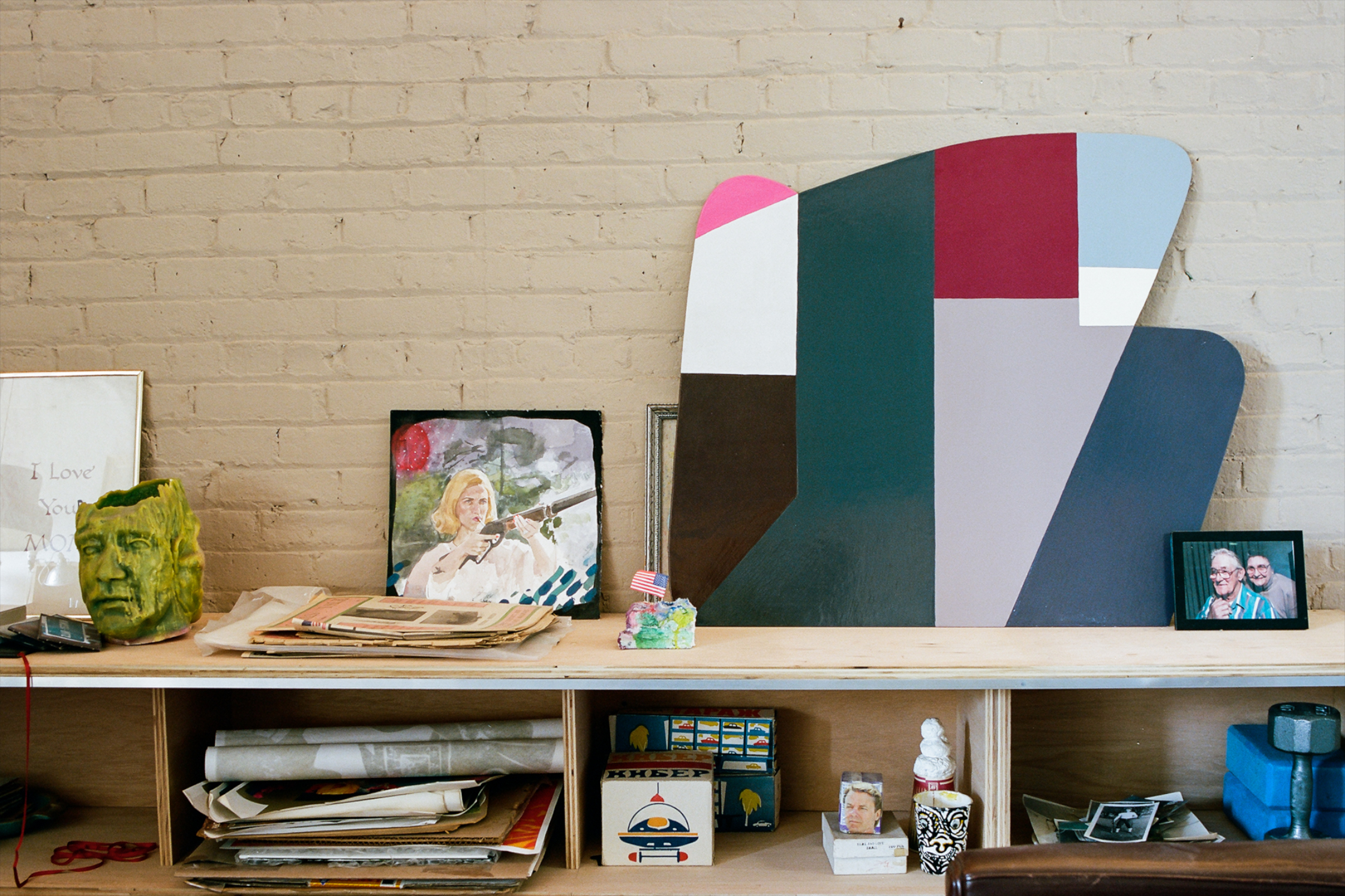
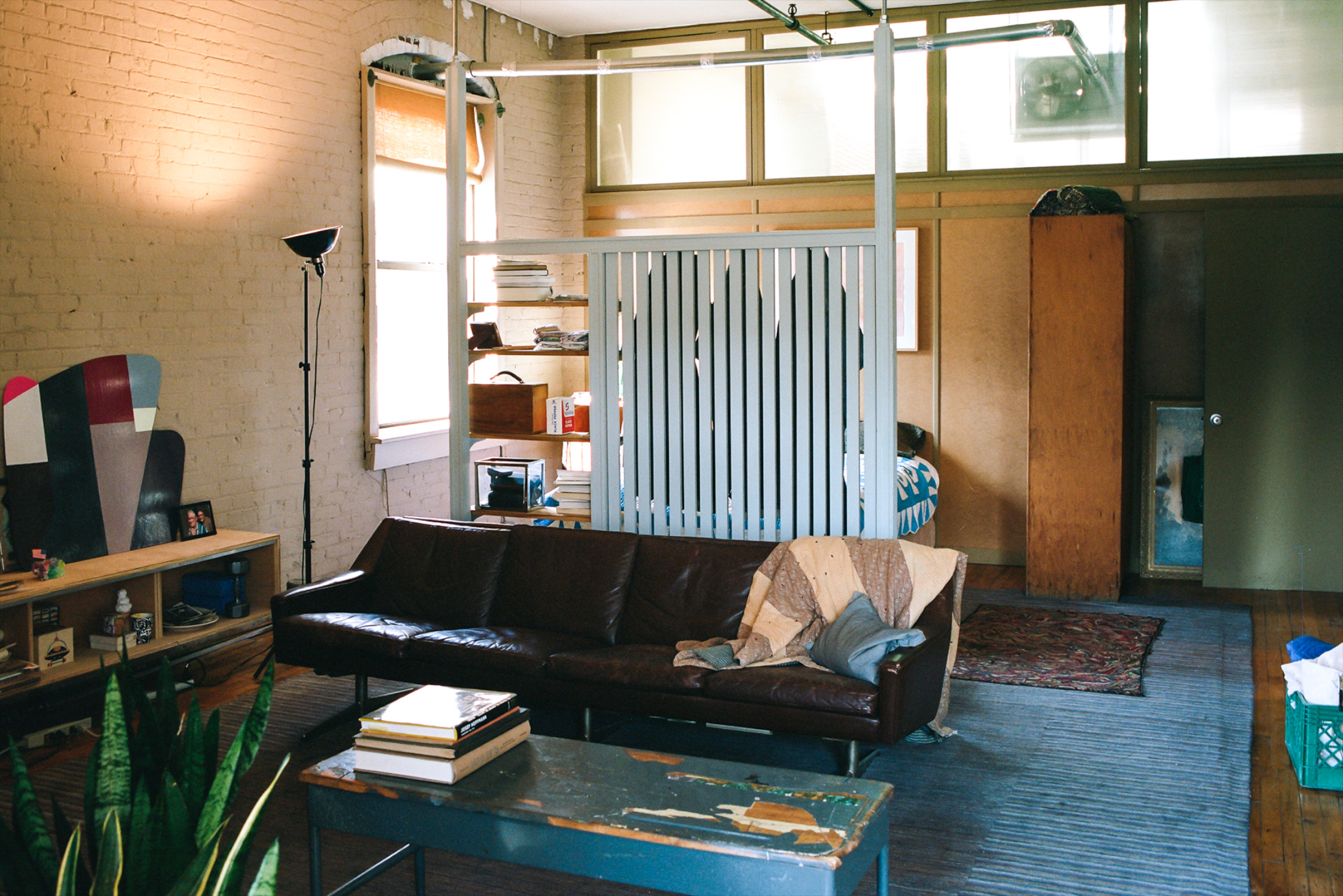
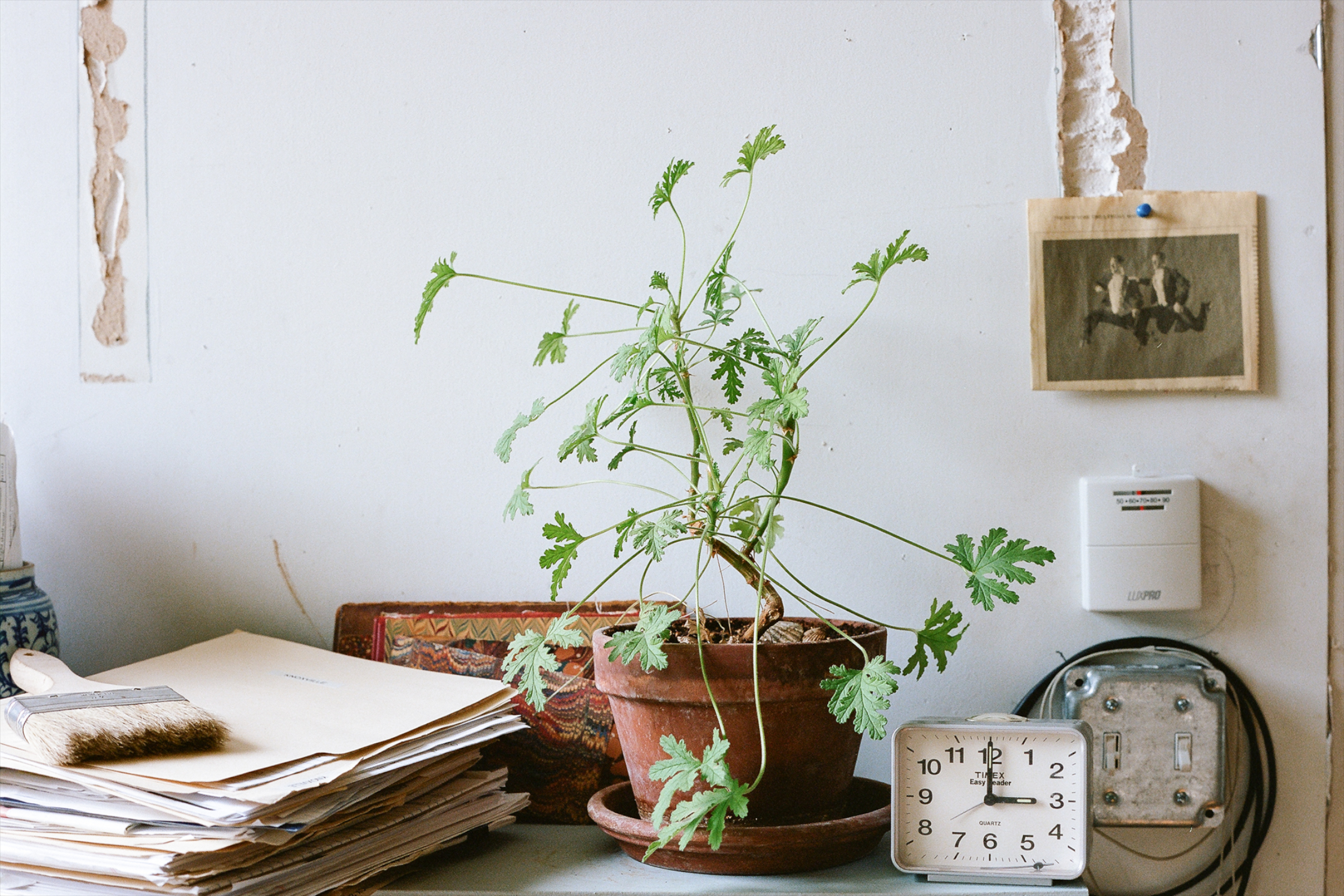
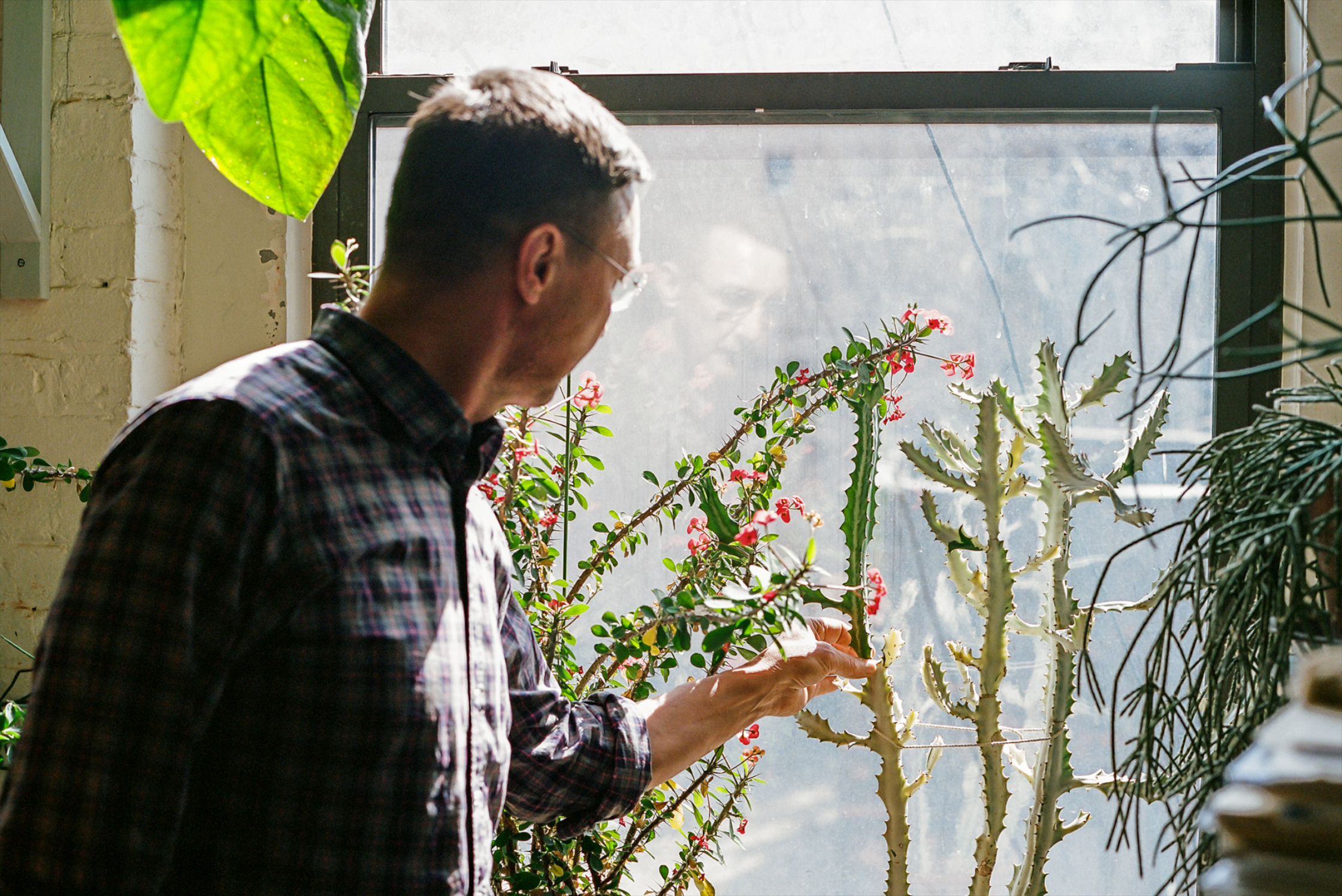
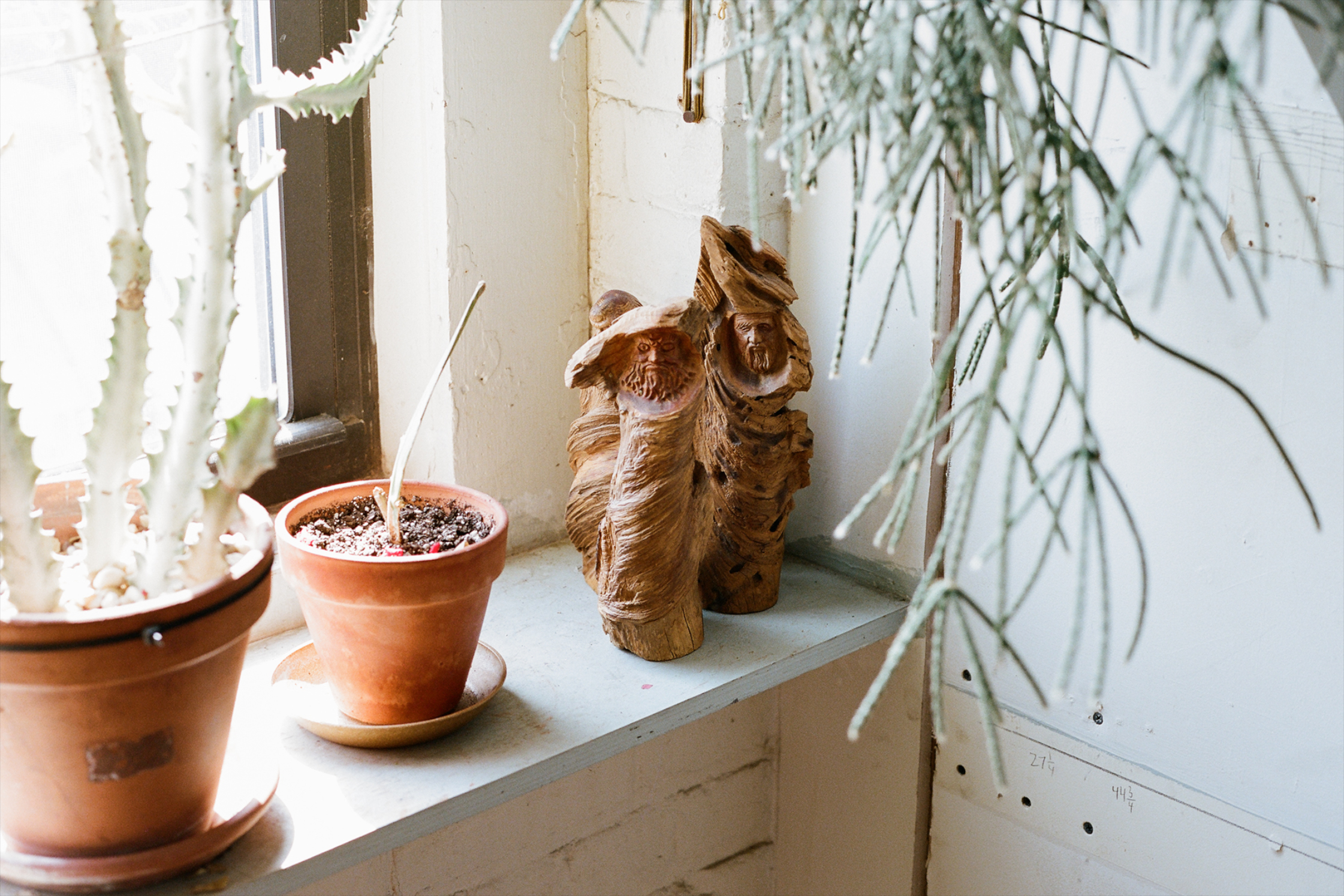
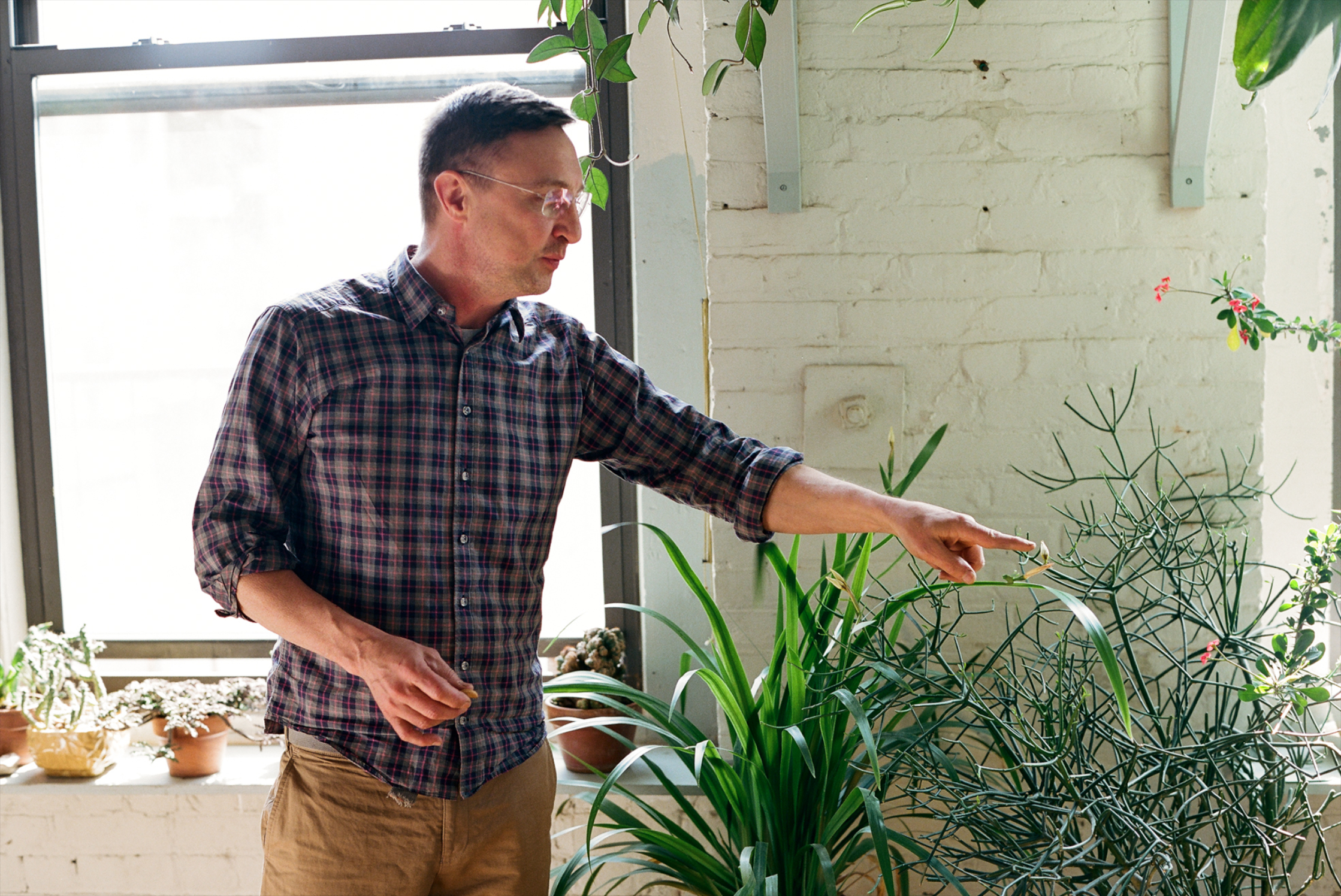
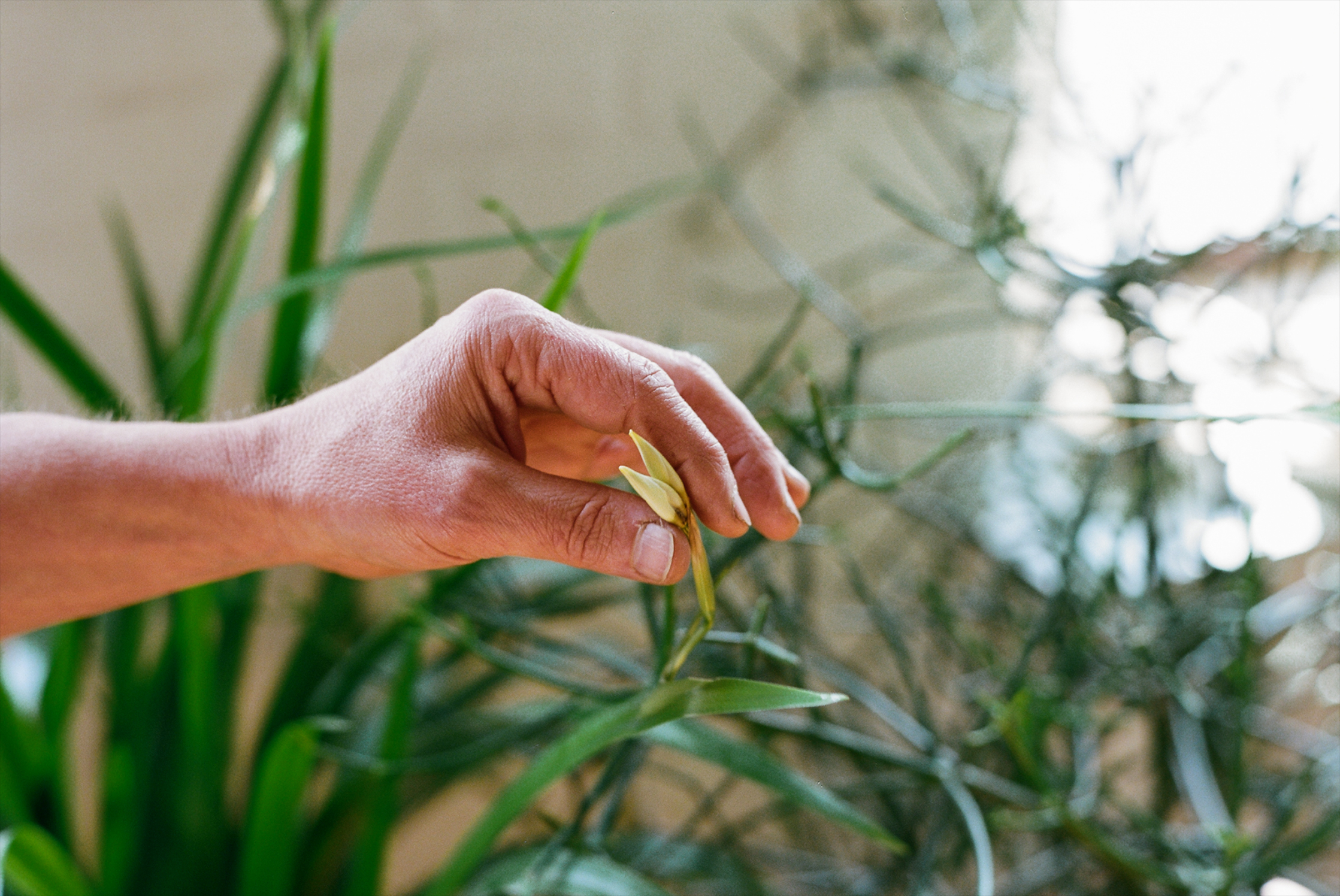
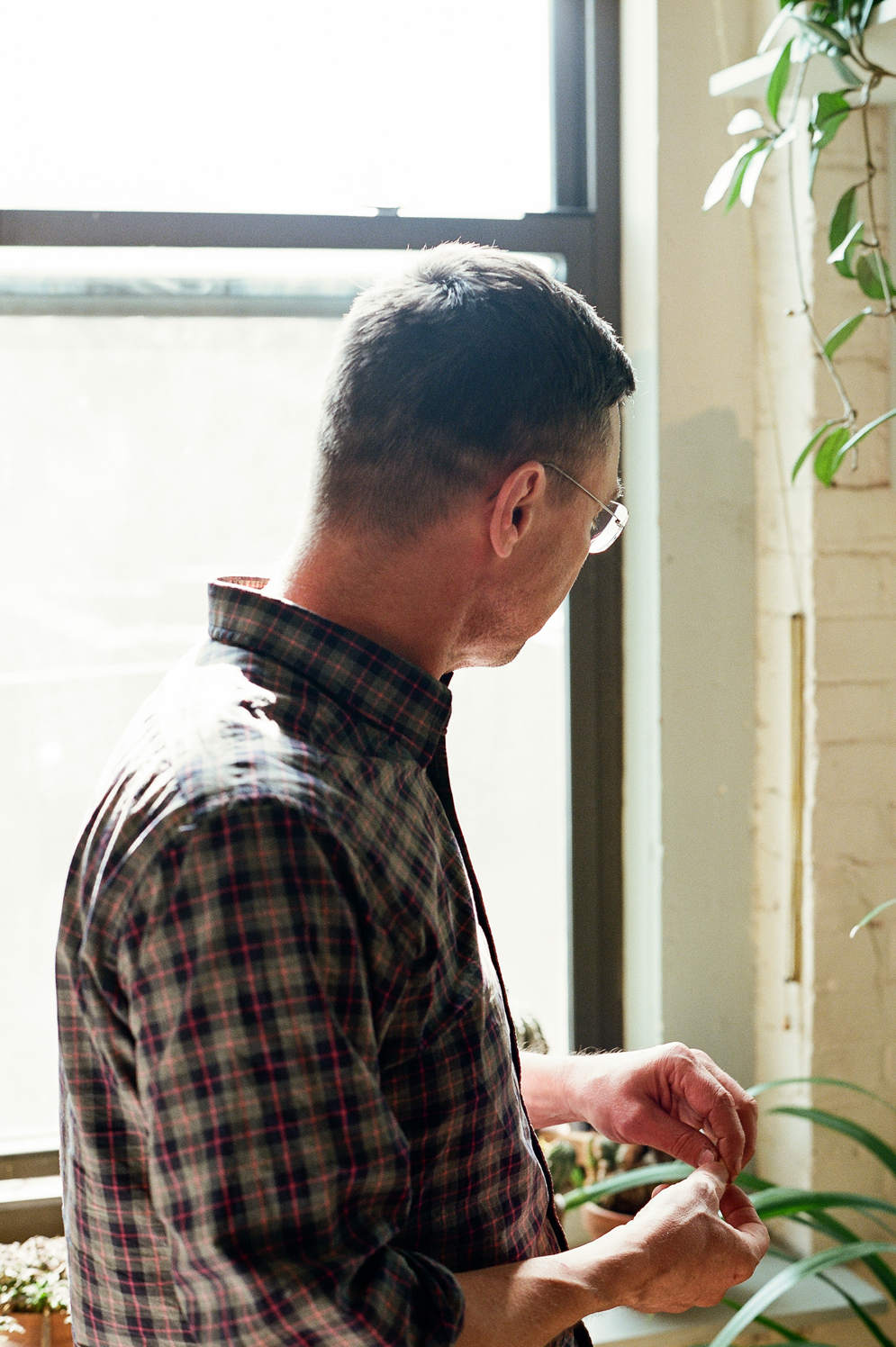
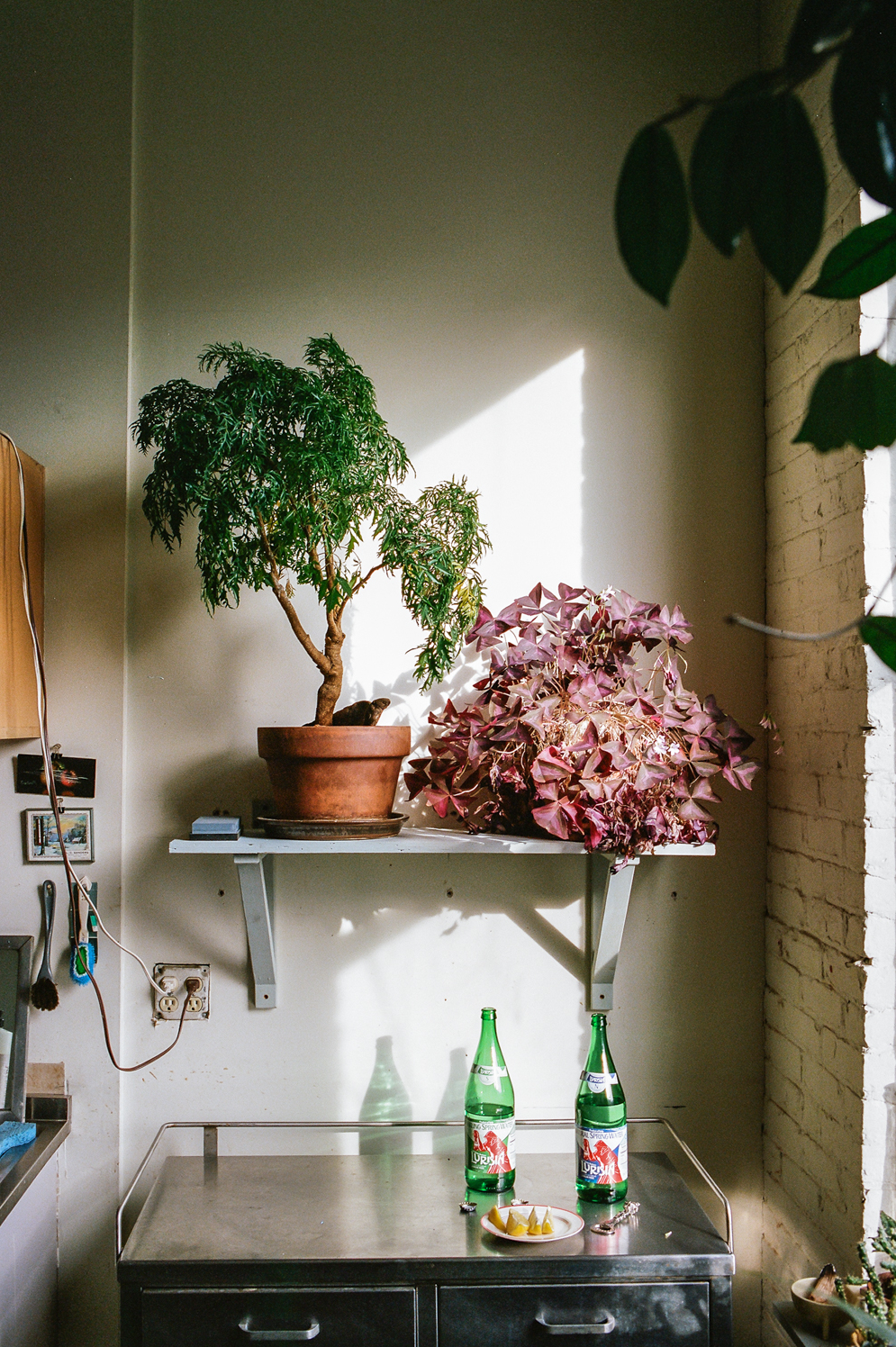
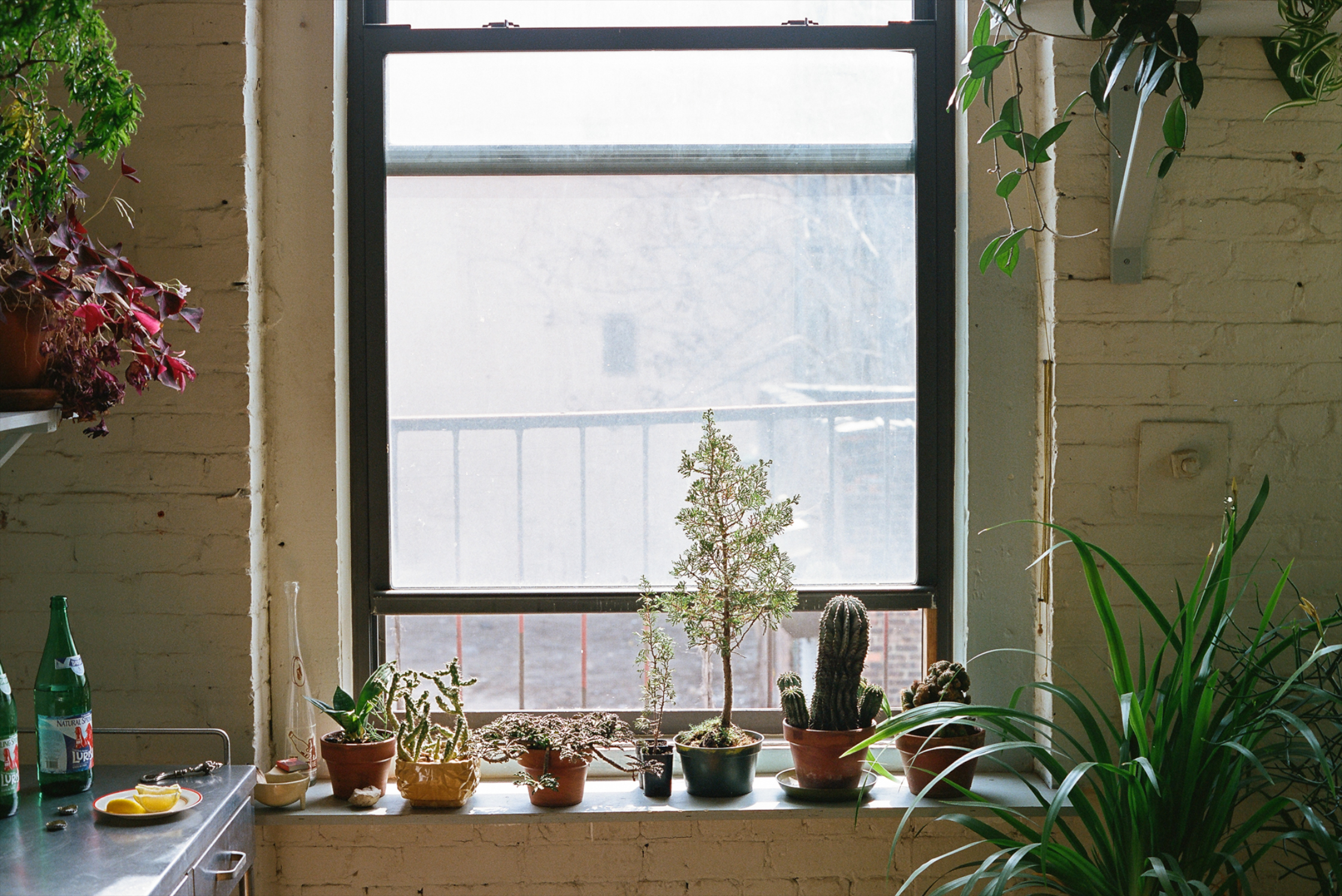
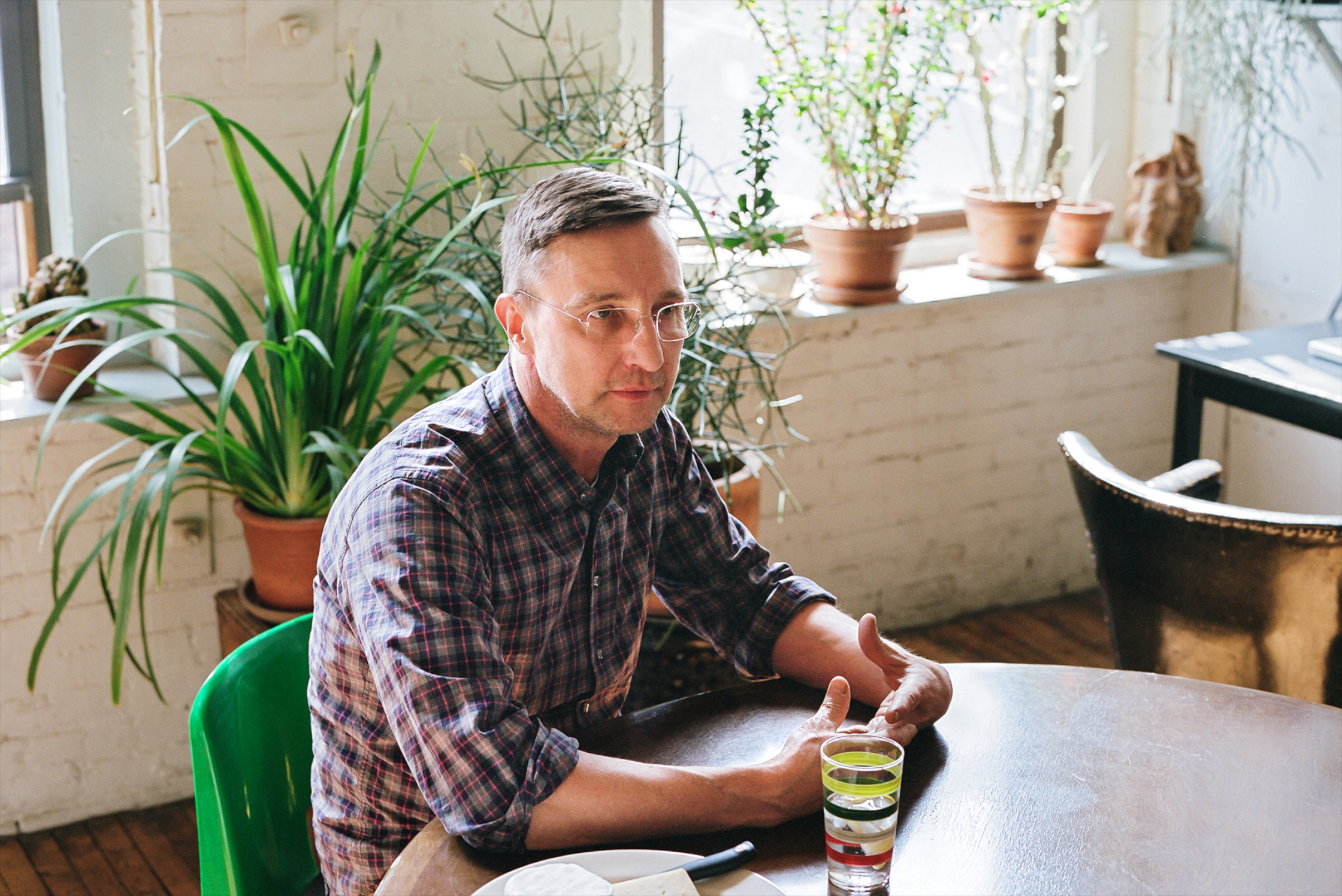
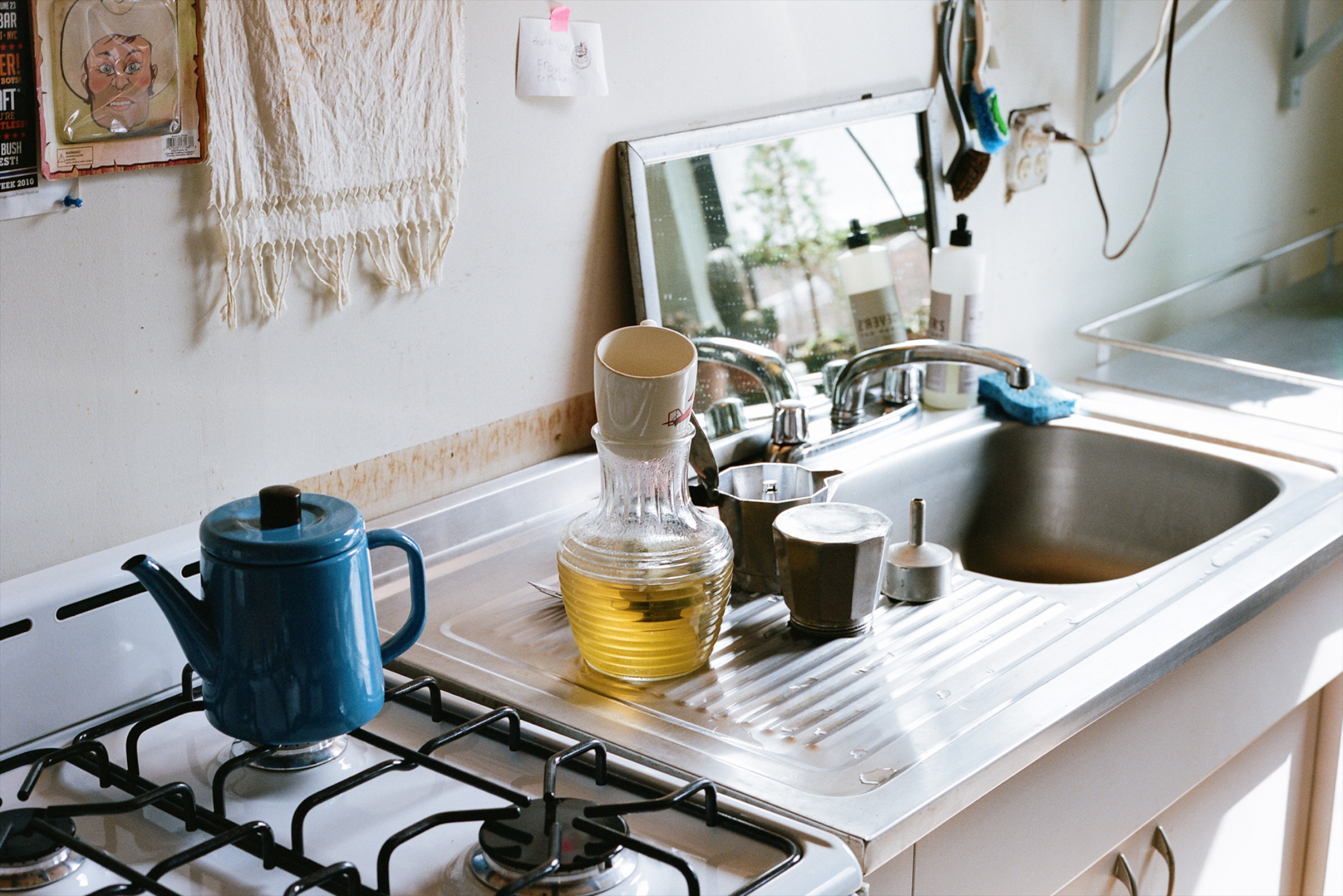
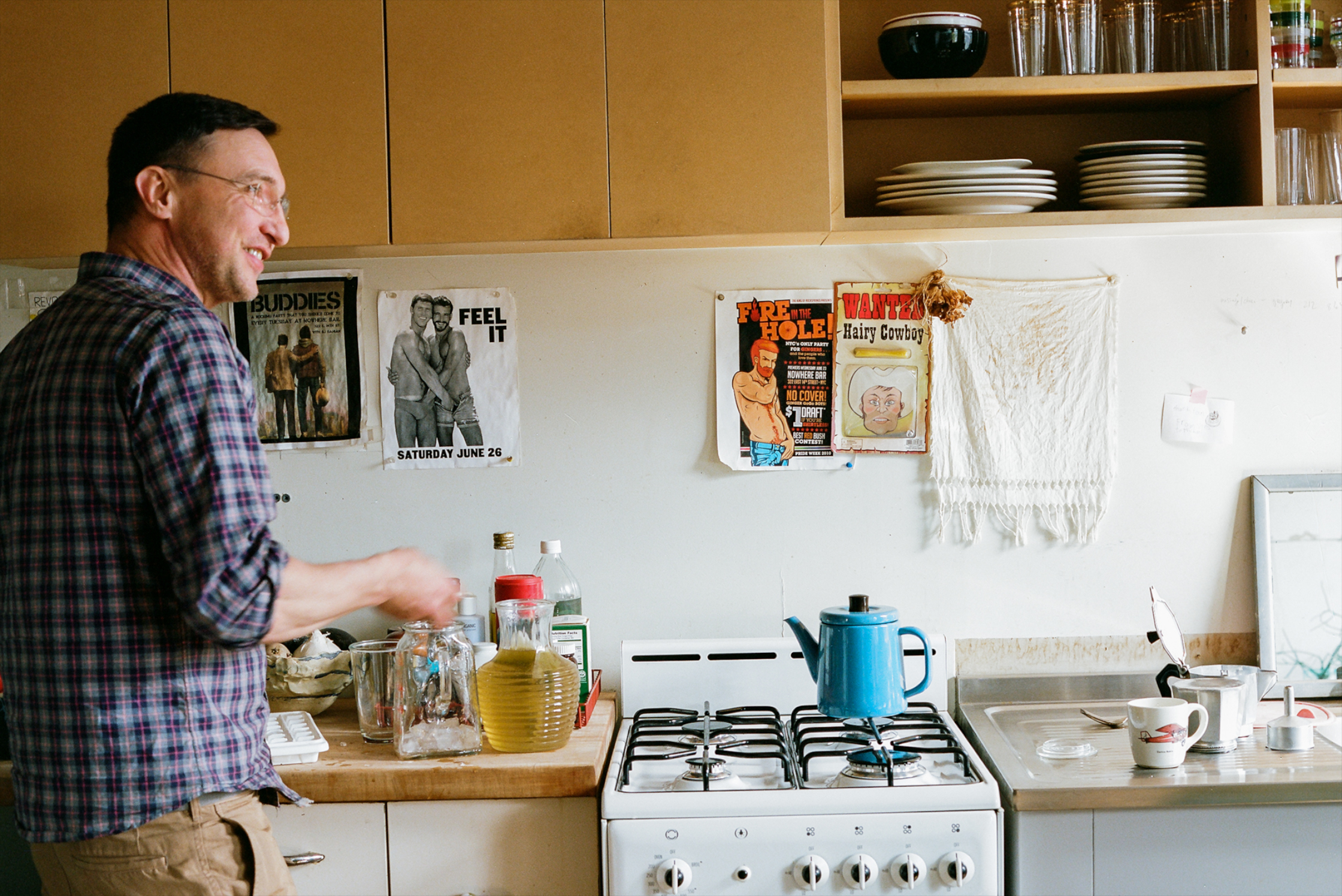
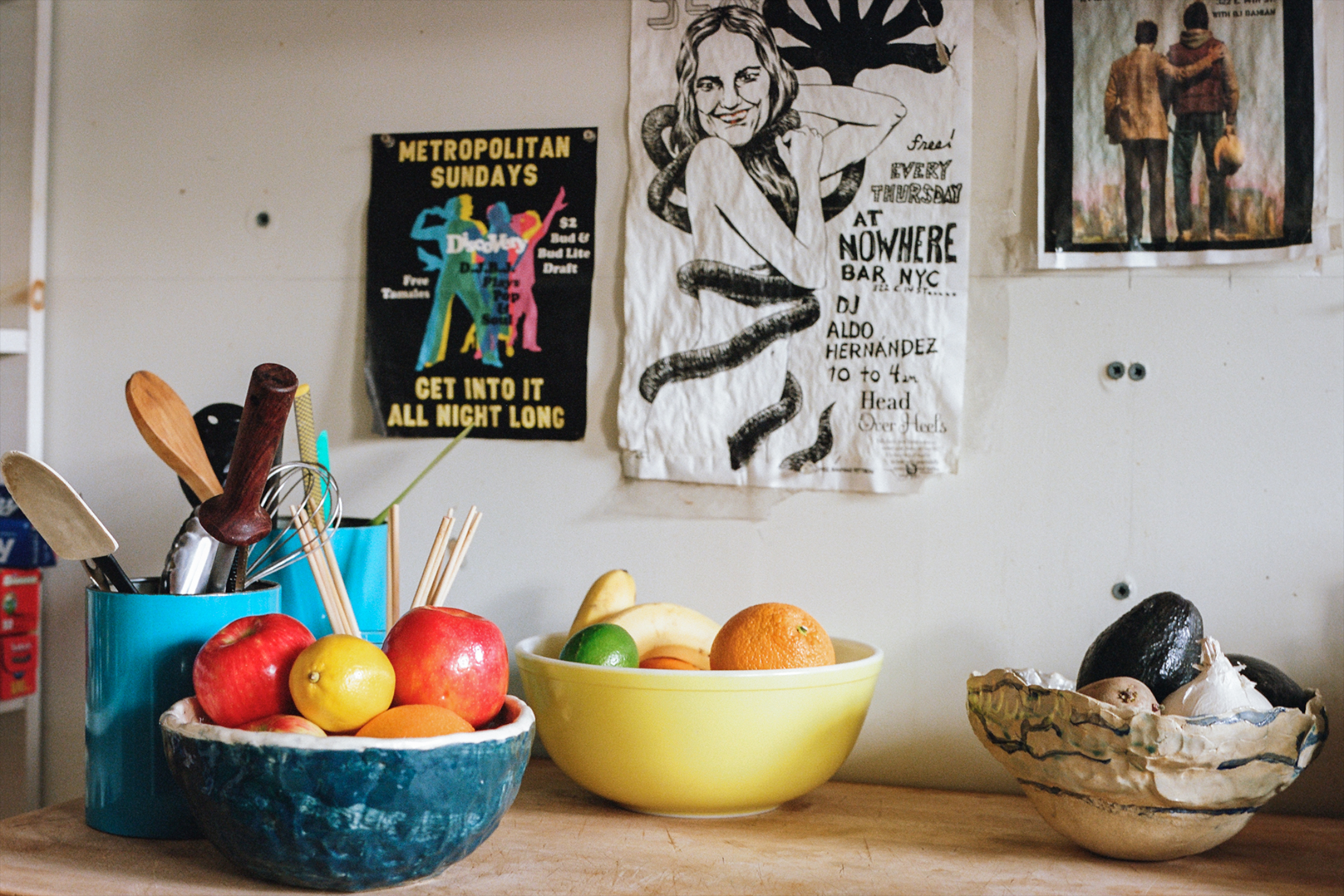
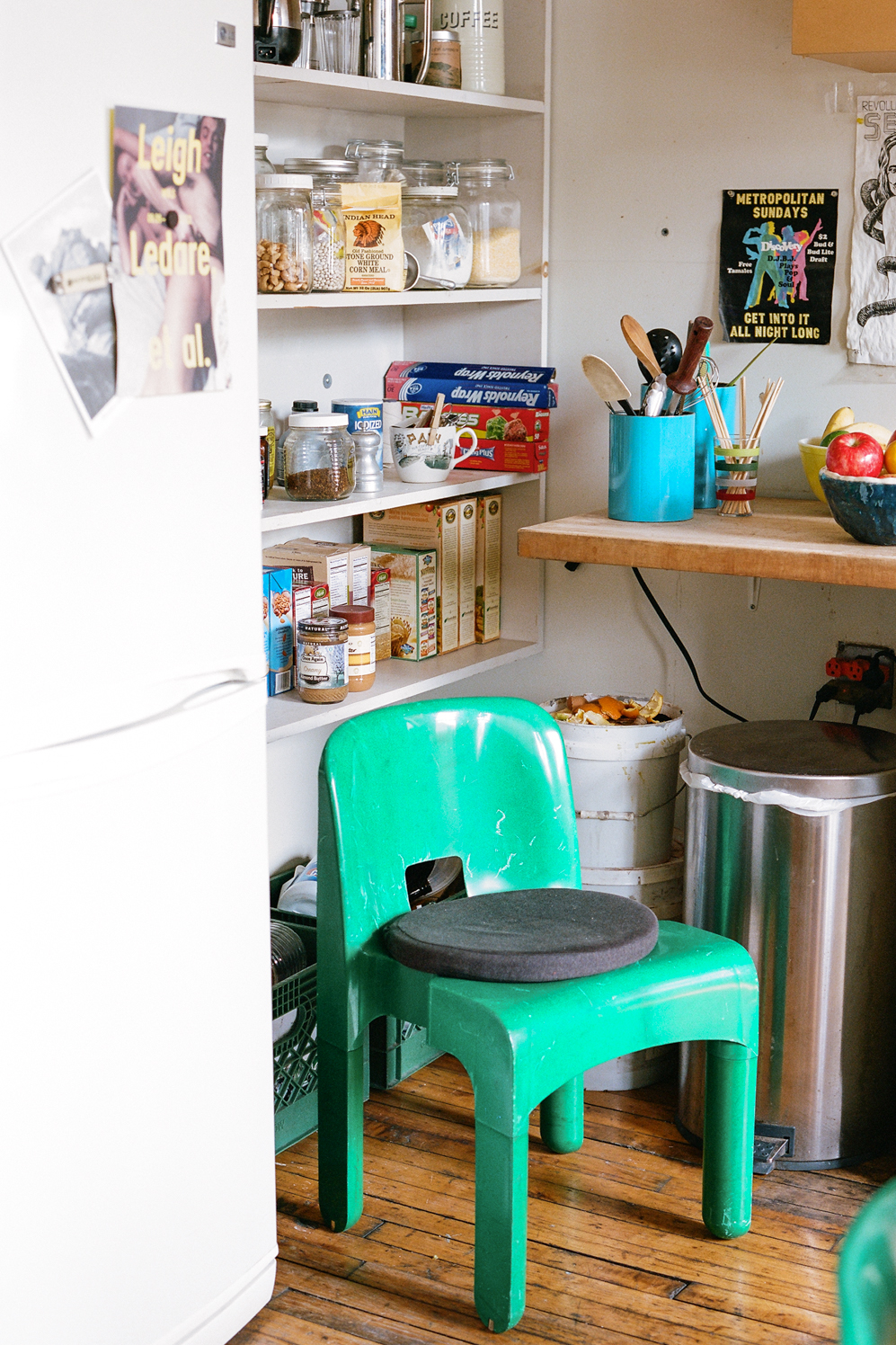
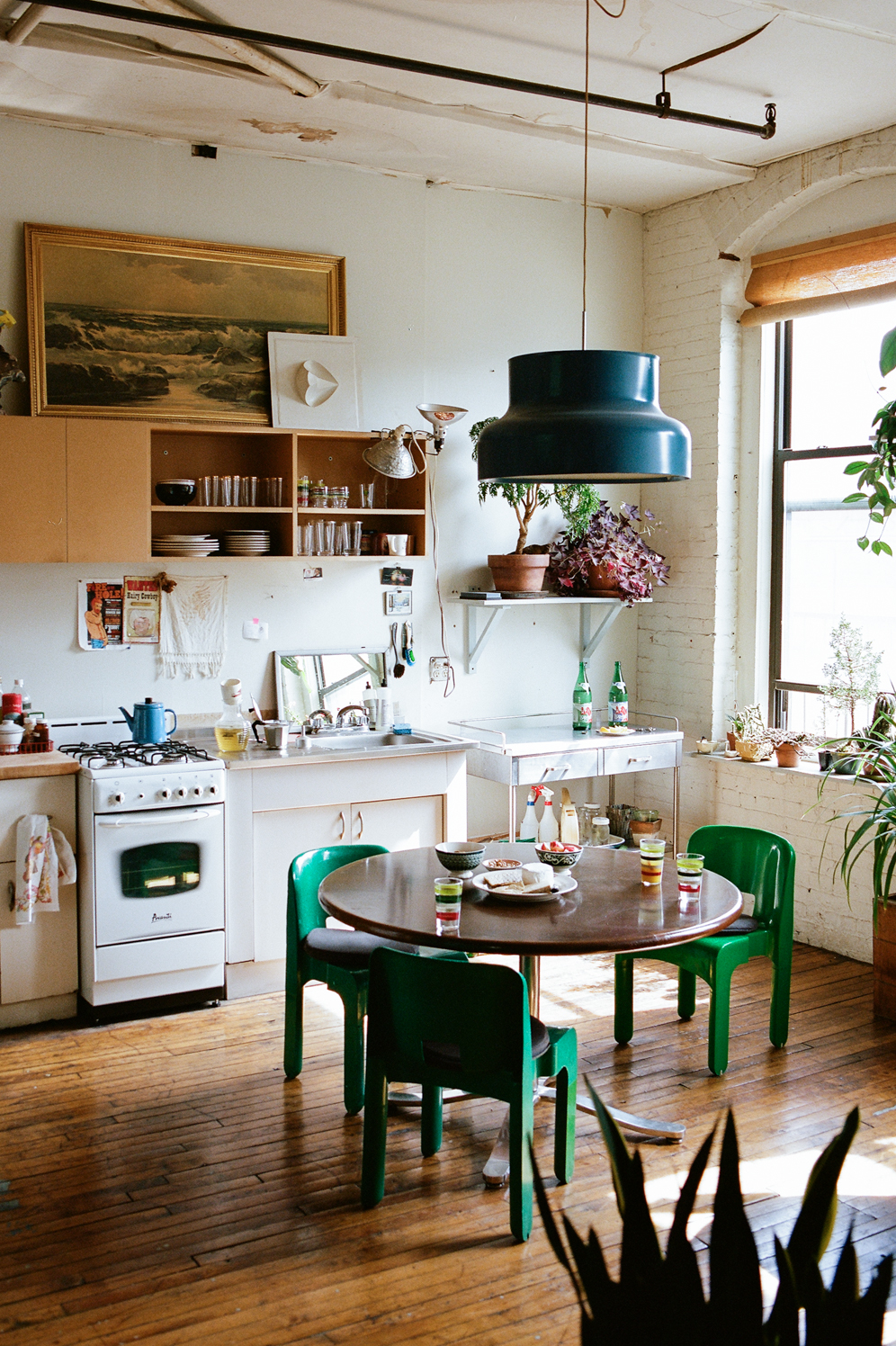
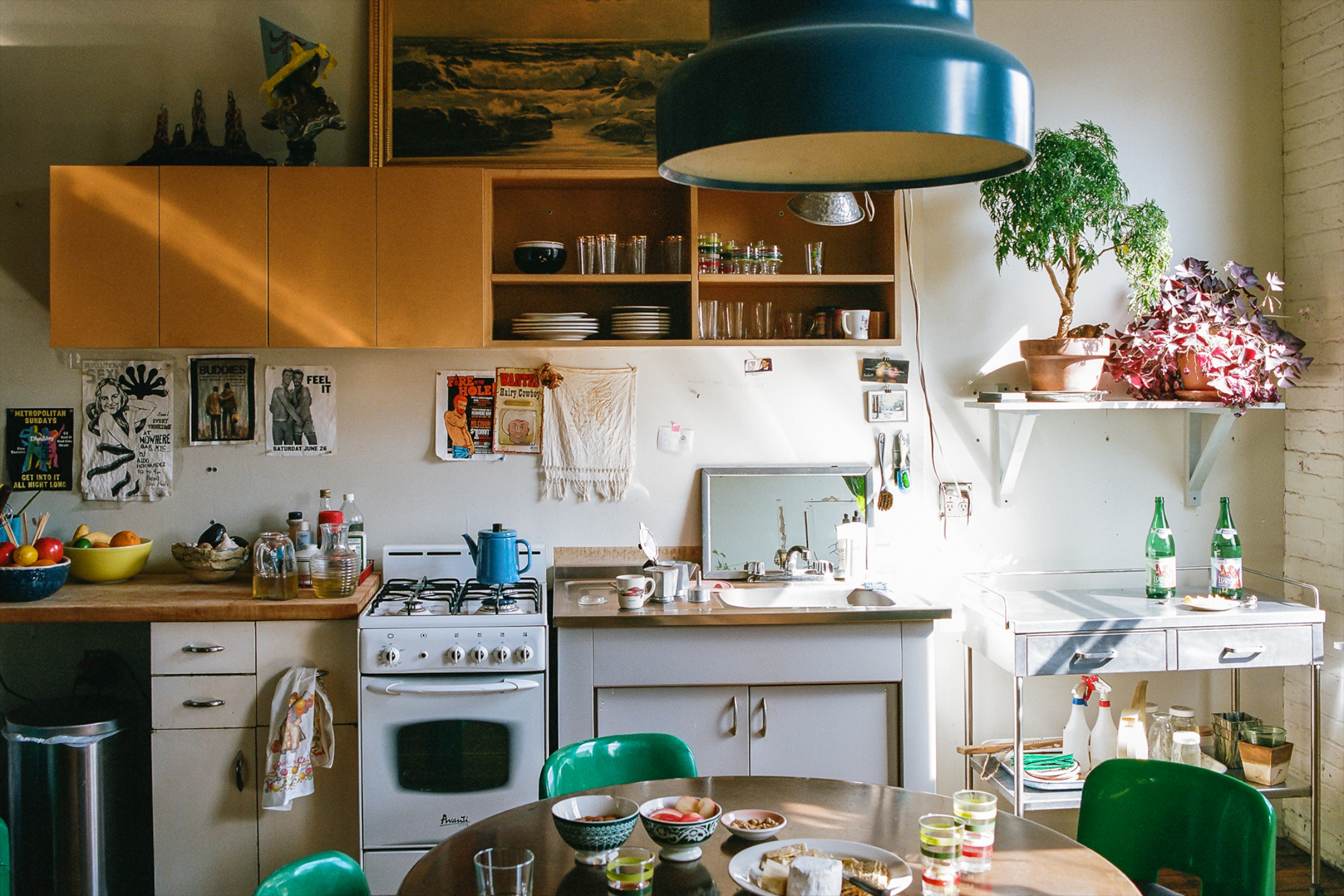
You mentioned you have been living here in Brooklyn for “thirteen or fourteen years.” Where are you from originally?
I am from a small town called Trenton, GA in the northwest corner, very close to Alabama and Tennessee. My parents are true Appalachian folks. They were raised as farm people. Amongst them I’m the first generation of non-farmers. They grew up as share-croppers. They have limited education and don’t necessarily think more education makes you better off. When I compare all of us, it’s true, my parents really do have more wisdom. Their wisdom is really almost genetic. They are true old style live-and-learn kind of people. They’re really dear.
Were your parents big on entertaining? What people from other places might call “Southern hospitality?”
No, if I were to take you to visit my parents, they would be very shy. They still live in the house that I grew up in, and there’s almost a lack of décor. Nothing exists without a purpose. And the purpose, is not just function over form. It’s like it almost doesn’t matter what it looks like because it has to endure all the grandkids or something. Their world is not determined by aesthetic ideas, but rather more by strict terms of practicality.
Have you inherited this strict practicality in terms of your own design?
Well for instance when my friends and I were straightening my place for your photographer earlier, it would sometimes become all about form. I really resist this. I would undo what had been ‘styled.’ We would place things, and it was very styled and I noticed how crazy it made me. Like oh, I would never do that, I would never place these things in a row to be viewed.
“In a row to be viewed” sounds like the presentation of a formal collection, not strictly practical.
My original state of being is a cluttered state. For example, when I lived in the South I had an enormous loft full of great old things. But now what I like is simple and easy to clean. And so in the past few years, practicality has won out over my clutter collection. I used to collect collections. I like multiples.
But you still collect some things…like art?
Yes, this metal piece is by Ruth Root, and the shotgun watercolor next to it is by my friend Joey Whiteley. And my friend Jeff Davis made the big human head candle that is two-faced. It has a monster face on the other side. He makes amazing candle sculptures.
And it is hard not to notice you have quite a collection of plants. Tell us about some of them.
Yes, I have a standard pencil cactus here, and this is a walking iris whose blooms only last for a day. I thought there were going to be three blooms for you today which is CRAZY, but now I’m thinking they are going to happen tomorrow instead. After they bloom they become like a spider plant, the blooms sprout smaller plants. Some of the other plants I’ve had for years…like that white cactus. I’ve probably had it for 10 years, it is white but grew a green color from the place where it had been broken.
What was this building was before you moved here?
I think the last thing was a golf bag factory, but I haven’t checked into that really thoroughly. The building was empty, except for one guy in another apartment. For two or three years, there were just two of us. There was evidence in here of artists from maybe the 70’s or the 80’s. There were some paint stains on the floor and you could see the outlines of paintings on different walls. I think these things were older than the new artist generation in Williamsburg.
Has the neighborhood changed since first arriving? What was is like?
There were only a few bodegas (convenience stores), but they were so jolly, so sweet. Still, when I first moved here I would wonder if it was worth it to go out at midnight to get cigarettes. I would think, do I want to risk it for cigarettes?
It has developed somewhat since then. What are your favorite place in the neighborhood?
I like the restaurant Rye a lot. It’s on South First, it’s really good. It’s kind of Williamsburg-ian. It has the sort of colorless Victorian interior inspired by Victorian black and white pictures where they leave out the color. I also like a Vietnamese place on South Sixth called Bia. It’s new and not a scene, really open, really casual, but slow service. You should never be in a hurry when you go there, but the food is really good.
Do you cook a lot at home?
I used to entertain a lot here, but then I bought a house upstate and it took all the excess time and energy that I used to entertain with. My upstate house took it all away (laughs).
Where is this house? Is that where you go on weekends?
It’s in Green County, at the top of the Catskills, between two and a half and three hours from here. I go anywhere from two days to a month, but I try to stay at least a week when I go. My schedule permits me to get away, and I can work up there. I was unable to get up there this past winter from just being busy locally. But I like all the seasons up there. December is a little rainy and cold, but every other month has its amazing offerings. It’s really beautiful.
Is this your ideal getaway?
Yes, probably. I am transformed after being there for a few days. When I bought my house, I thought, being a decorative artist, I would be interested in working on the inside of the house. But it is the thing I neglect the most, because I want to work on the outside of the house. I’m just starting to work on the inside a little bit, but am still not interested in it. I want to be outside. Also, when I lived in the South I fantasized about living in a cold, snowy environment in the winter. When I got my upstate place I wondered if it would be true. If I stayed there during the winter, would I really love the snow, and I do. I love shoveling it, I love walking in it. I love the light.
Back to your studio here in Brooklyn. Did you do all the renovations yourself?
Yes, I’ve built places like this out several times but I can’t remember ever once painting an apartment. I can’t remember ever actually finishing. Currently I have plans to make my apartment into kind of a showroom sort of thing.…a plaster awakening.
Speaking of plaster, tell us more about what you’re working on in your studio?
I’m a decorative artist who specializes in plaster finishes and tinted plaster. Not the venetian plaster, shiny waxy thing, what I do is more sculptural. I’m not that involved with the technical aspects of it. I design the color and texture of the finish and then there are guys who apply it with me and who are really technical. I develop the idea, then work on the finish in it’s final phase and make sure that the whole thing is going to work. Most plaster finishes have a definition, but the things that I make are not so definable. It’s not a type of plaster. It’s something else.
This sculptural idea is interesting…
I often think of plaster as working with super thick paint. And, my finishes are so varied that I use a lot of different types of materials. I offer finishes in addition to plaster as well. We might paint, or sew, or print, or stencil to achieve different textures.
You have many samples lying around, can you tell me more about some of these?
This is the sample showroom that doubles as my office. This sample, for example, involves plaster applied to burlap as a substrate. But the plaster is so thin that I can cut it, I can change its shape. I can essentially make panels and install them, and then hide the seams with some sort of trim.
And there are many color examples used basically as recipe cards. So if I’m asked to do a particular finish, I’ll first try to identify the colors. If it’s one I’ve developed for another project, then I have the recipe for it. If not, then I develop a recipe for how to achieve it which is a process that takes several days. It’s not like paint. When plaster is wet it’s not close to the color it’s going to be when it’s dry.
It appears that one of the most important aspects of your work is color?
Our emotional response to color is really strong, it influences the way we feel and who we are. The color I use in the plaster comes in powder pigment form and I develop the color through a consuming trial and error process. Sometimes it takes days to get the color I’m trying to make.
And do you feel your palette is influenced by nature?
Well, I guess it could either be based on nature or chemicals. Of the two, I much prefer colors found in nature. But, I know that some paint colors make me think of paint, and some paint colors don’t. I don’t want to think of paint when I look at a wall. I’d rather think of anything else.
When working with clients where do your ideas and inspirations come from?
Sometimes they begin with a photographic image that a client gives me and I translate that into plaster. Sometimes it’s paint on a canvas. Over the years I have learned to experiment broadly. But more often than anything else I work with the client to try to invent something uniquely appropriate to the space. I try to invent something new that is not an imitation of something we’ve all seen.
Do you have a history with plaster?
I thought it was a fluke when I was given the opportunity to work with plaster about 15 years ago. But then, I remembered incidents from when I was a kid. I once saw in one of my mom’s women’s magazines where it described the walls of this really beautiful robin egg’s blue room as tinted plaster and not paint. I was so fascinated. And later, I remember seeing metal which had been embedded in plaster. It was a metal screen on the wall, and plaster had been rubbed into the screen. I was fascinated by that, too, but initially I didn’t hang onto it.
You work on some big projects like the Anthropologie retail spaces. That must take some doing. What is that like?
I like to be planned and organized, and I had put together these really large projects when I lived in Atlanta, so I understand how to manage large projects. I like a kit to be installed. All the pieces of a puzzle. It is highly planned and then I have a limited amount of time to install. I have a crew of really talented people that work hard and have their integrity intact and want to make something beautiful. And to solve the problems that we need to solve, quickly.
Lastly, what other Michael Allen Company projects should FvF readers go check out?
I made a “ black box” office cube in the middle of the furniture showroom at KARKULA, on South Fourth here in Williamsburg. I have a long relationship with John Erik Karkula, the owner. He knew that he wanted a “black box,” but outside of that he let me develop everything else about it, and it turned out really nice. A lot of times with plaster I don’t know how it’s going to turn out, exactly. It’s always a risk, but it’s always beautiful. I find that if I have a great color I can experiment with the surface as the material is being applied. And then there are oils and resists that we sometimes use to change or alter the color and the finish. But I’ll stop here, because it’s endless.
Michael, it’s been great speaking with you and hearing about the craftsmanship involved in your specialist line of work. To learn more about Michael’s plaster projects you can visit the Michael Allen Company website here.
This portrait is part of our ongoing collaboration with ZEIT Online who present a special curation of our pictures on their site. Have a look here.
Photography: Brian Ferry
Interview & Text: Chrissa Theodore
